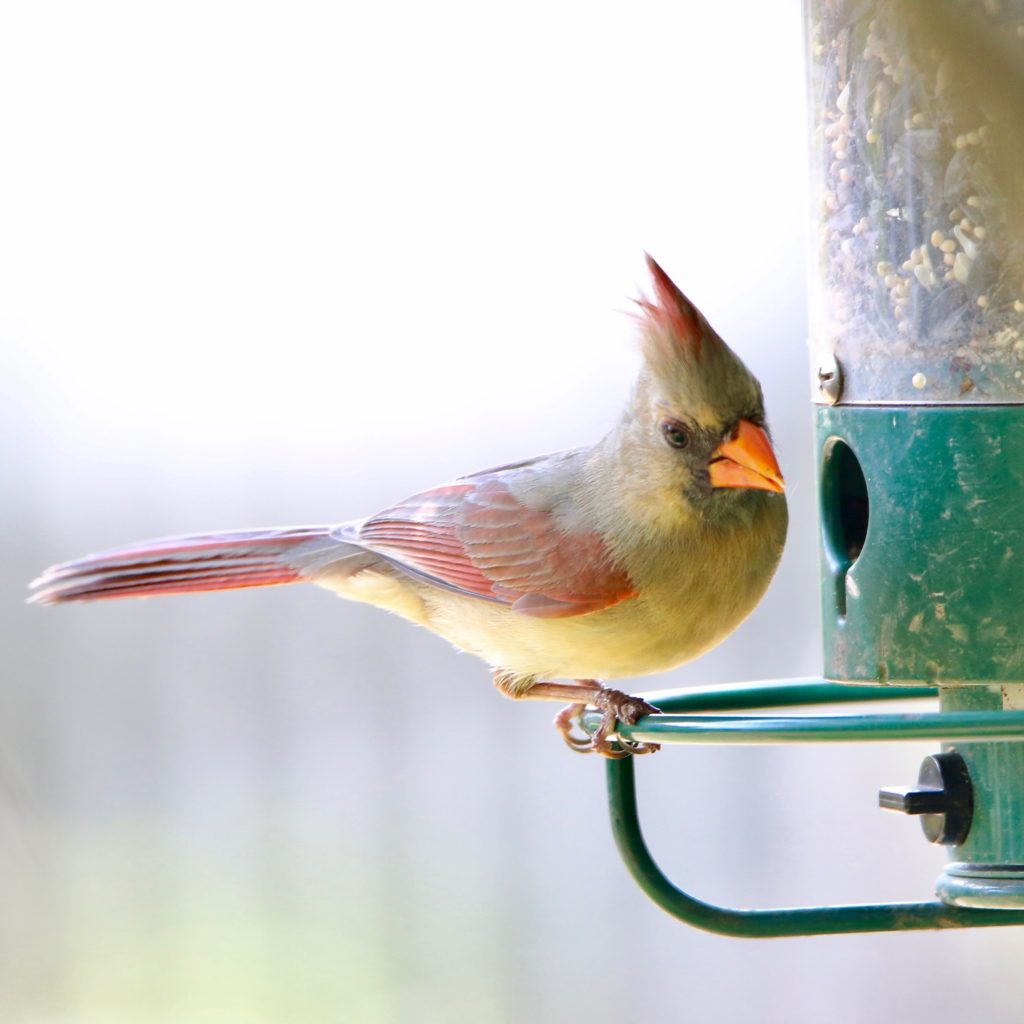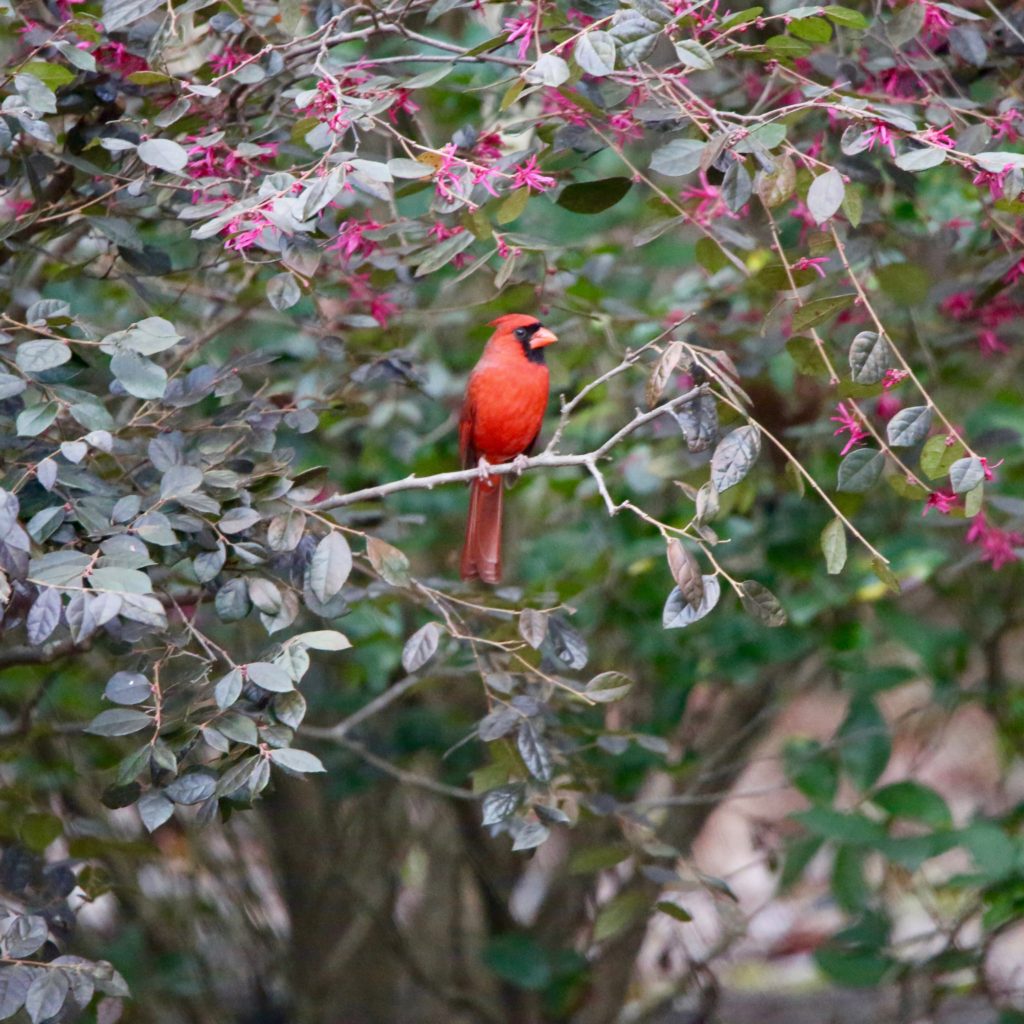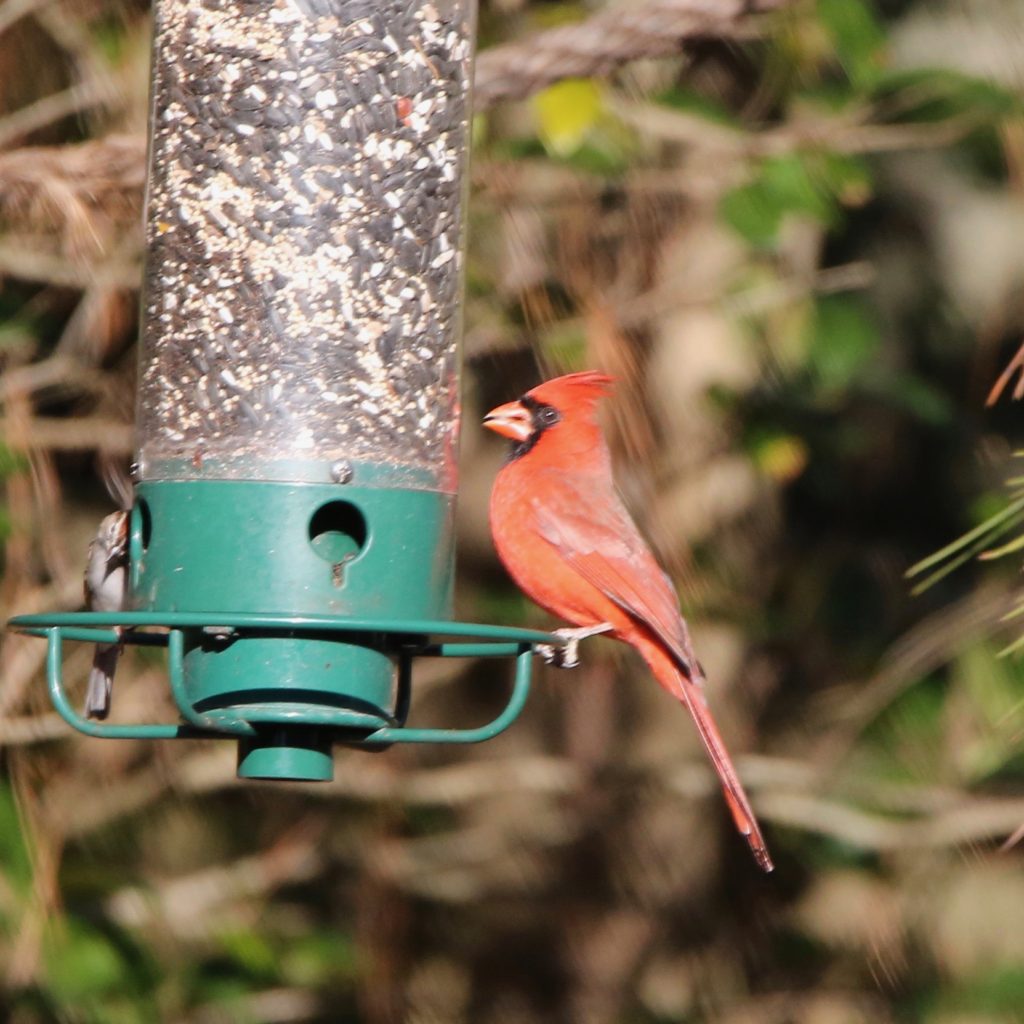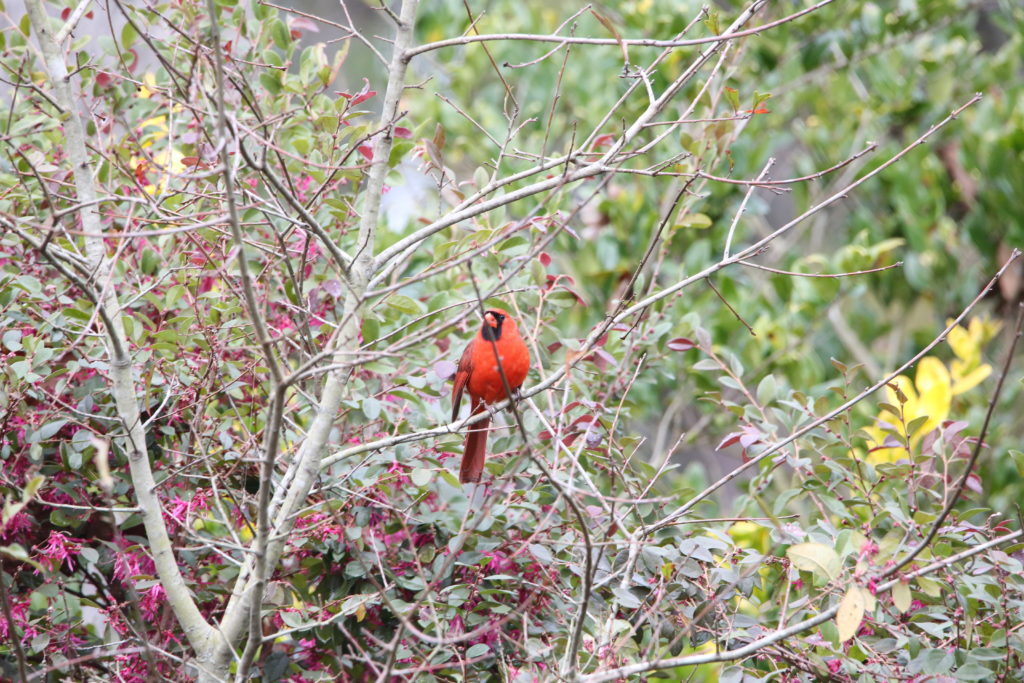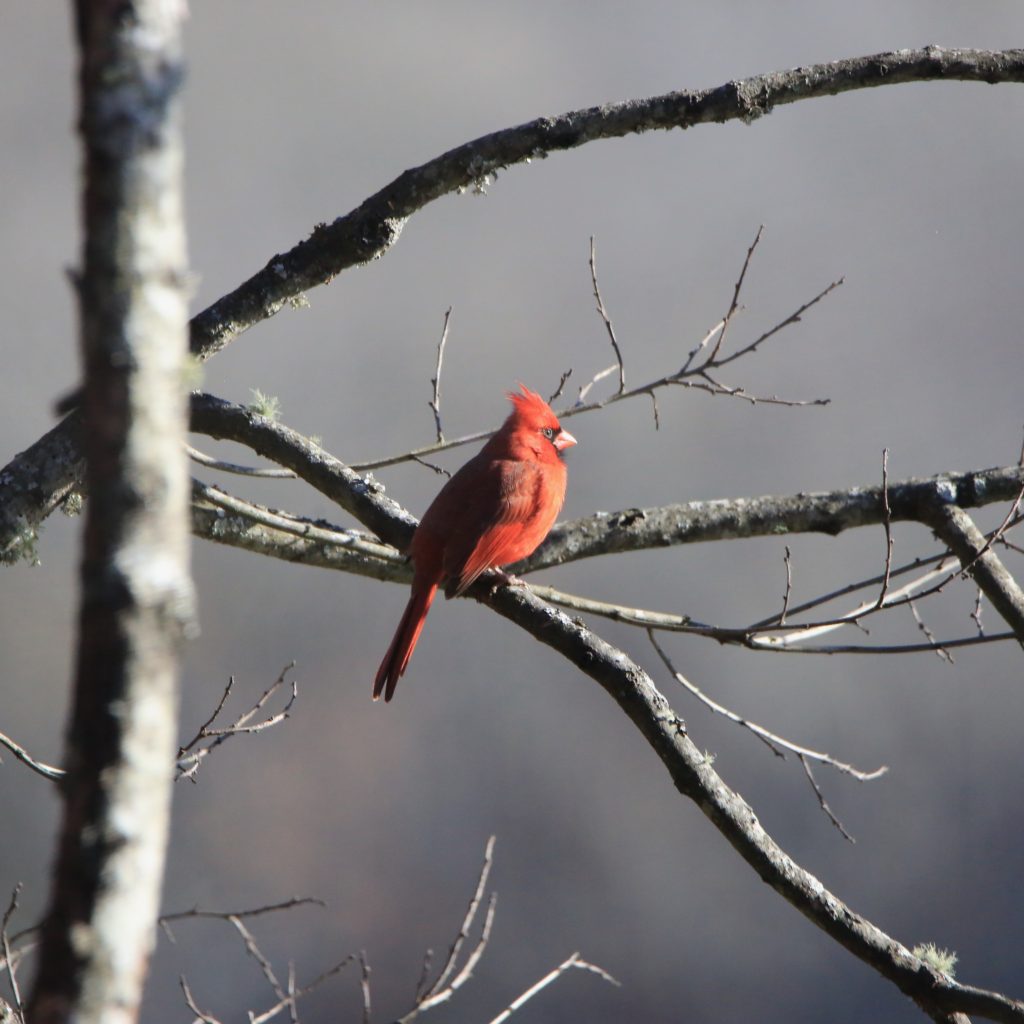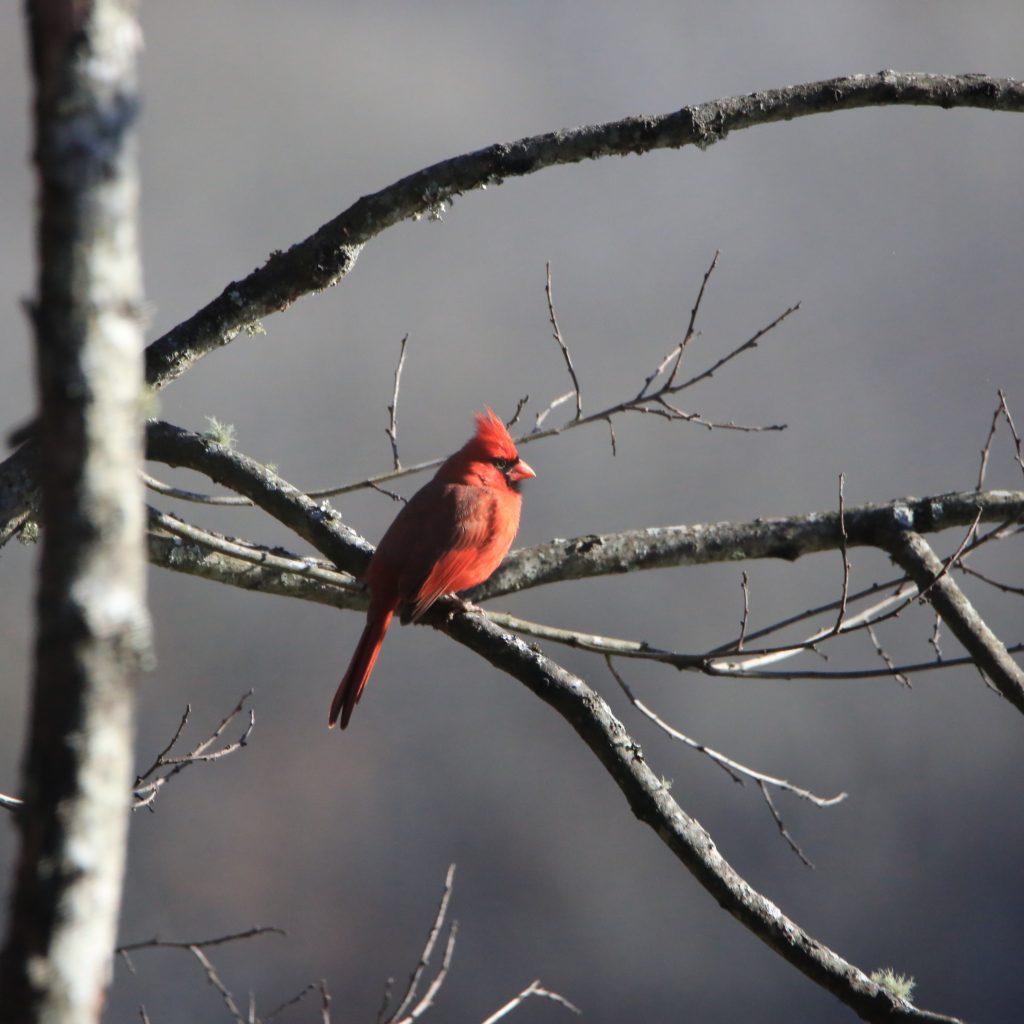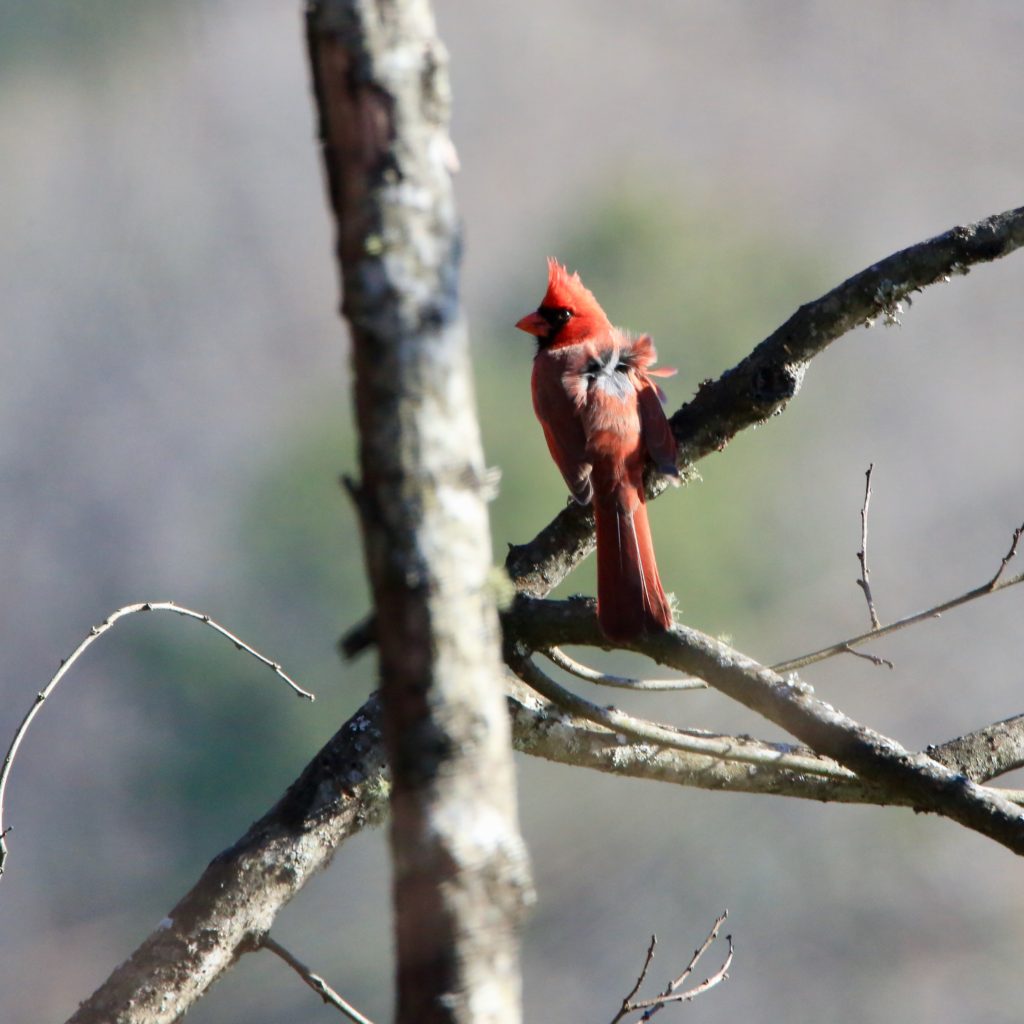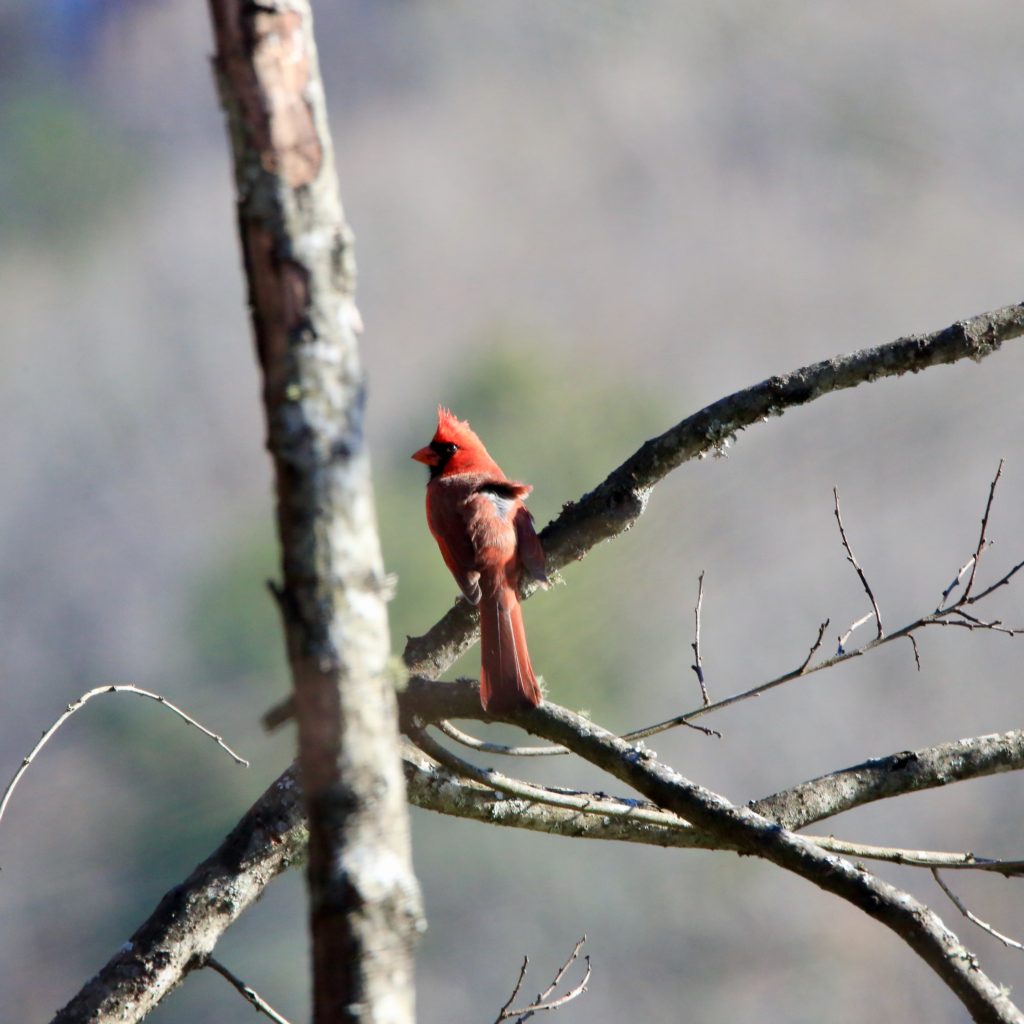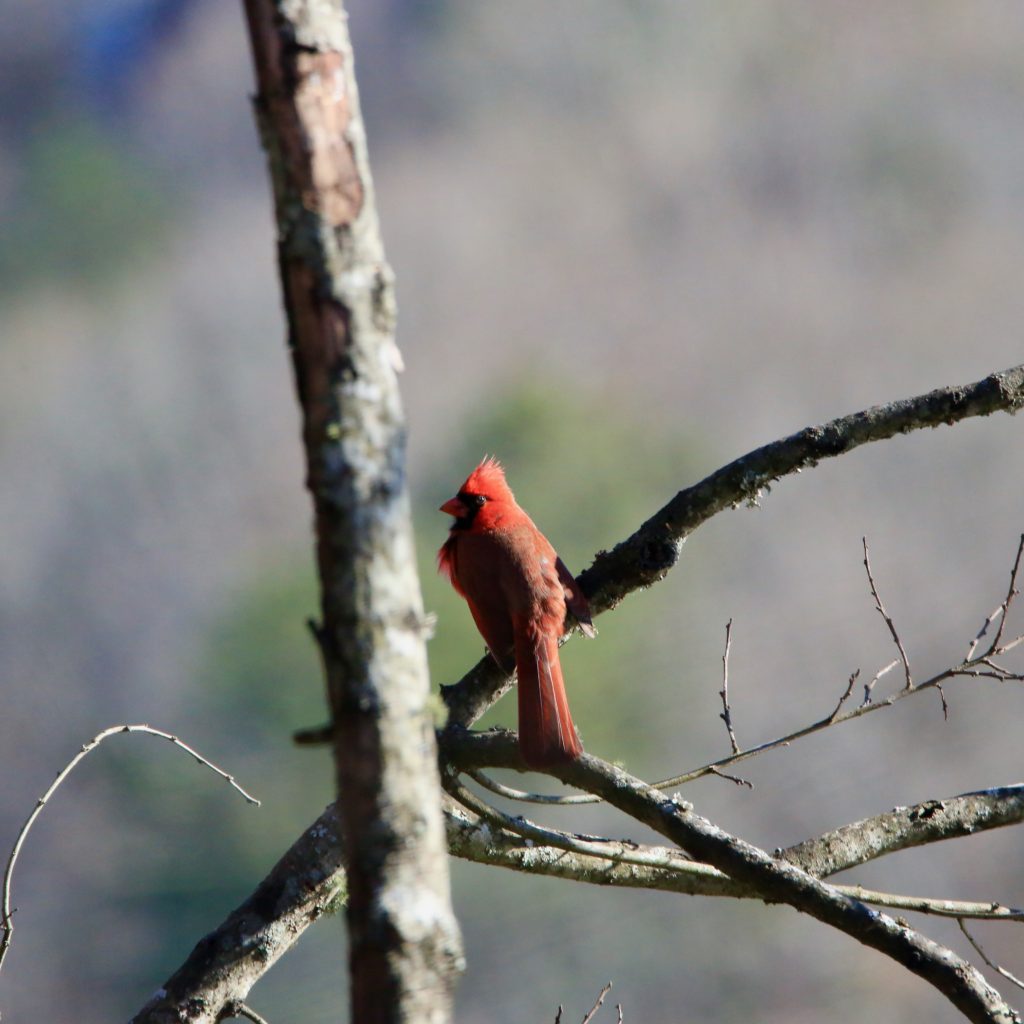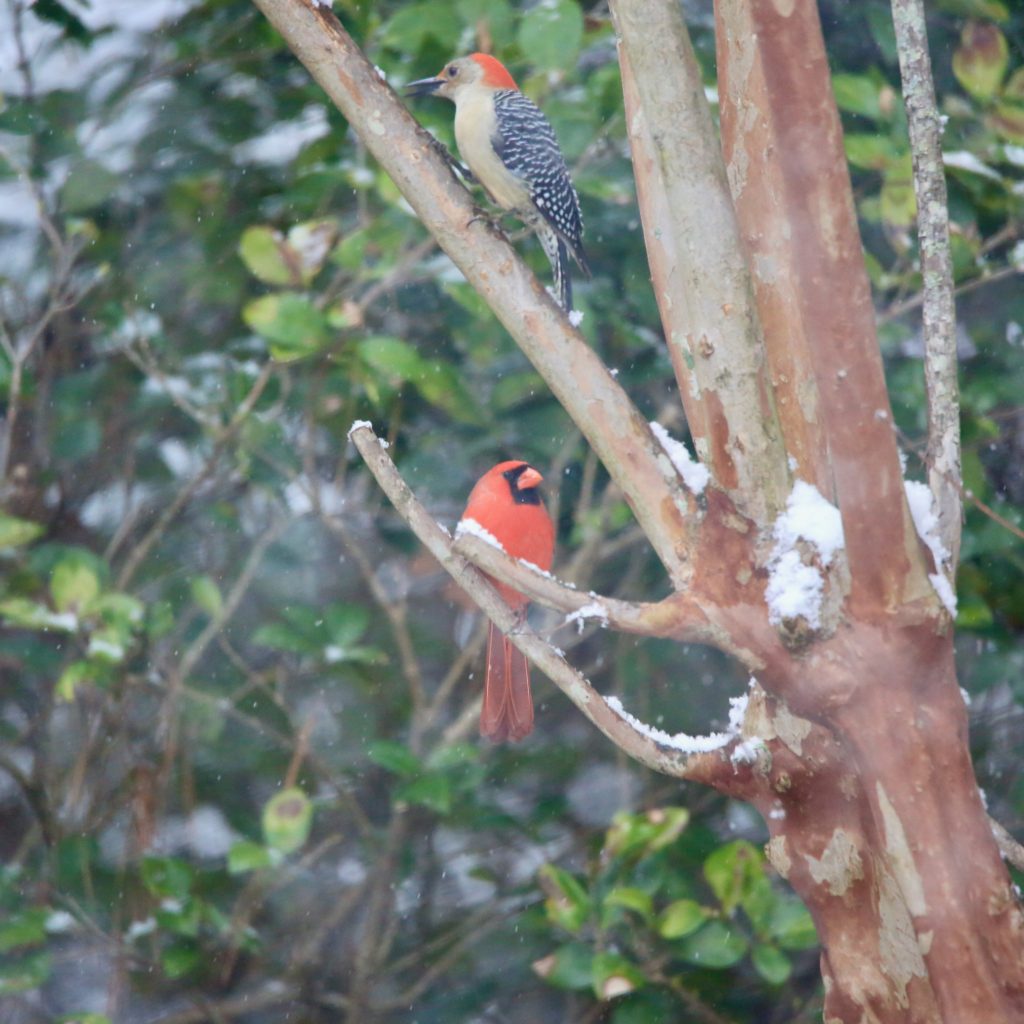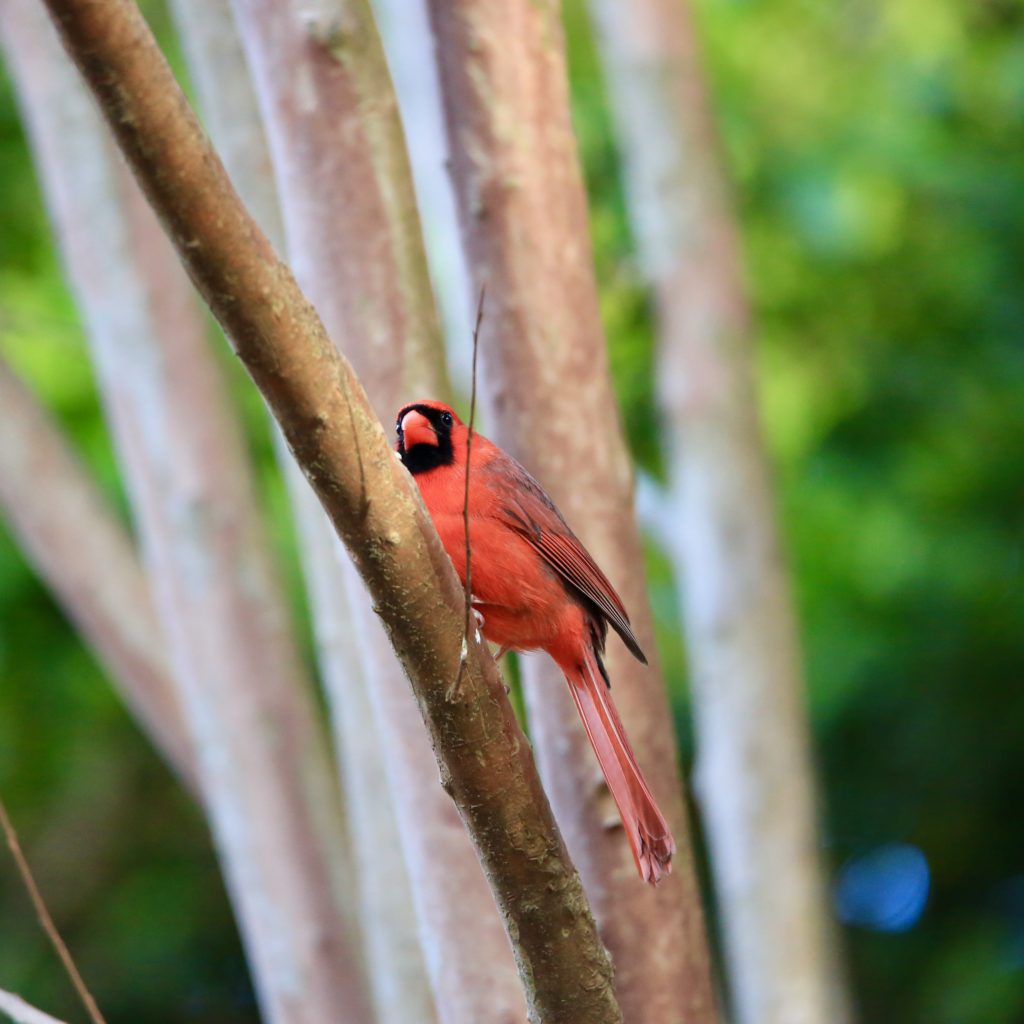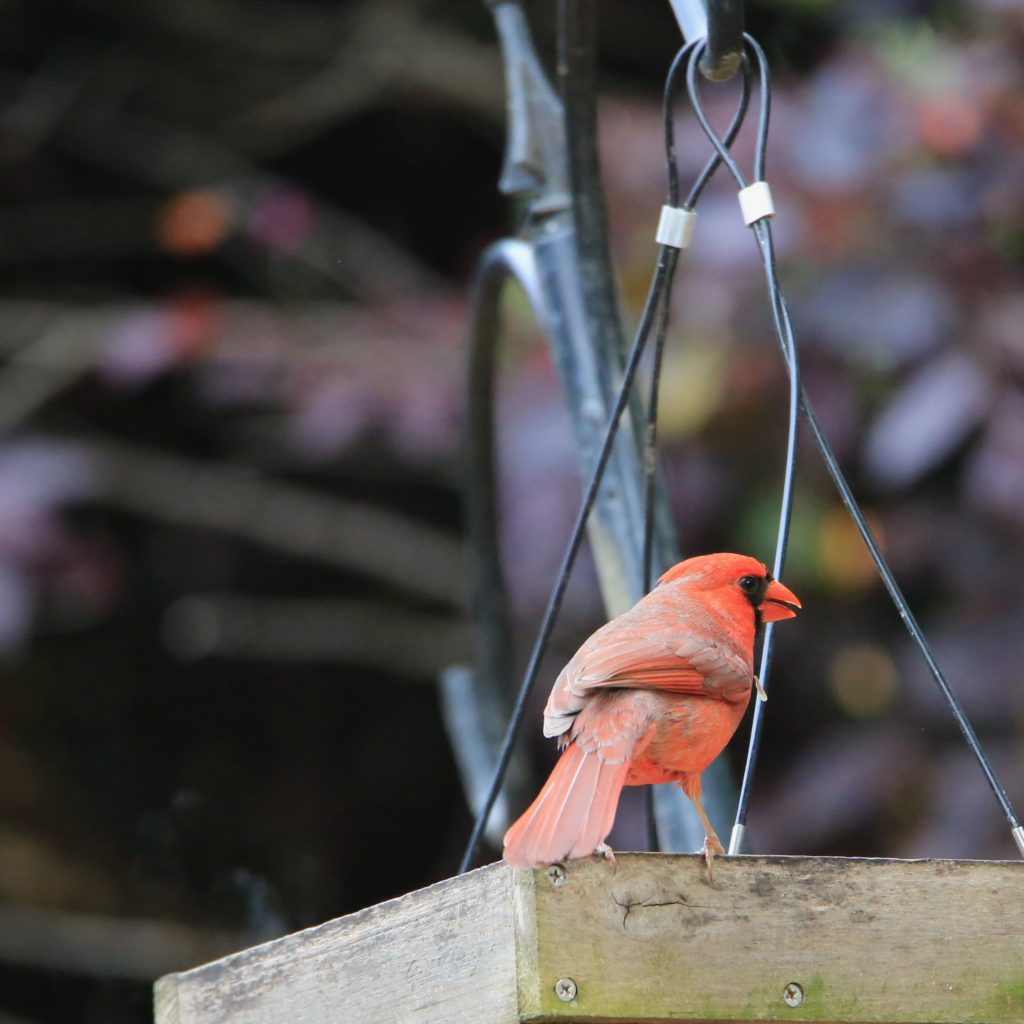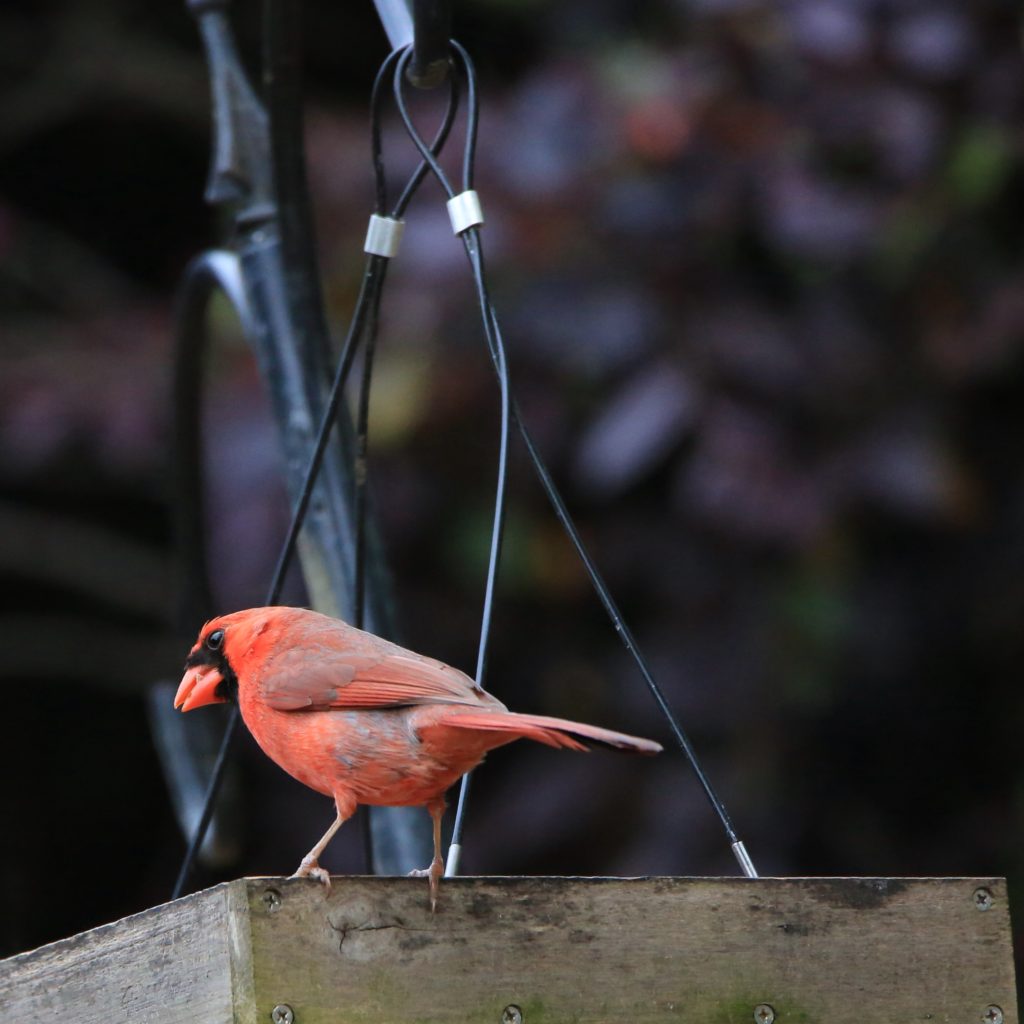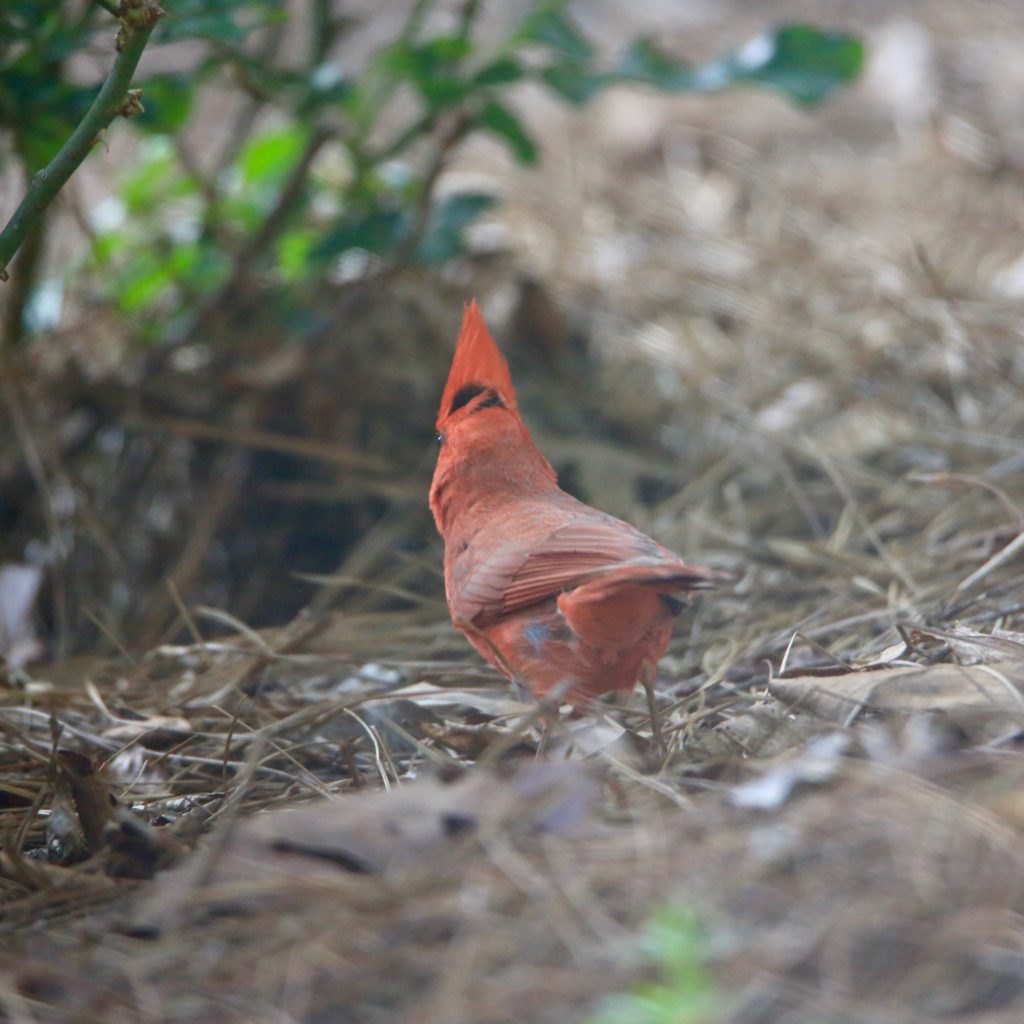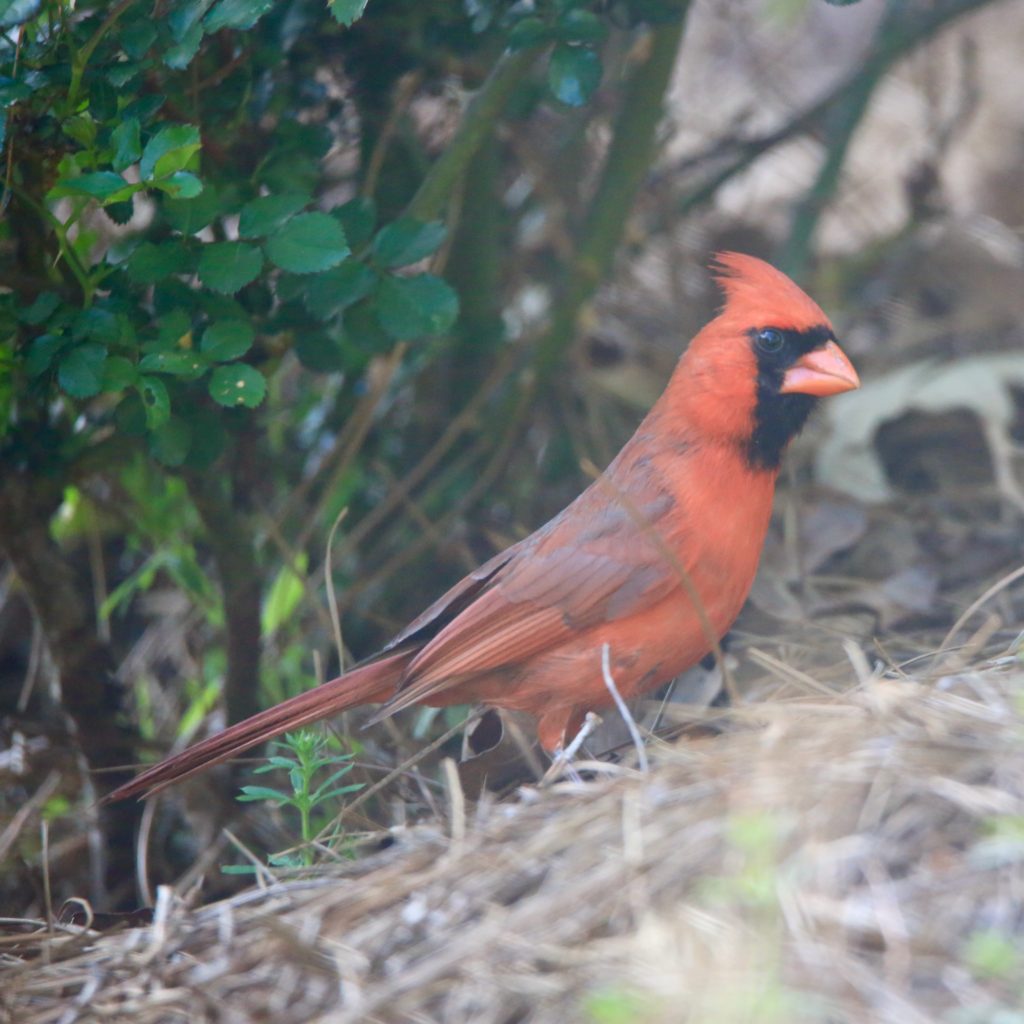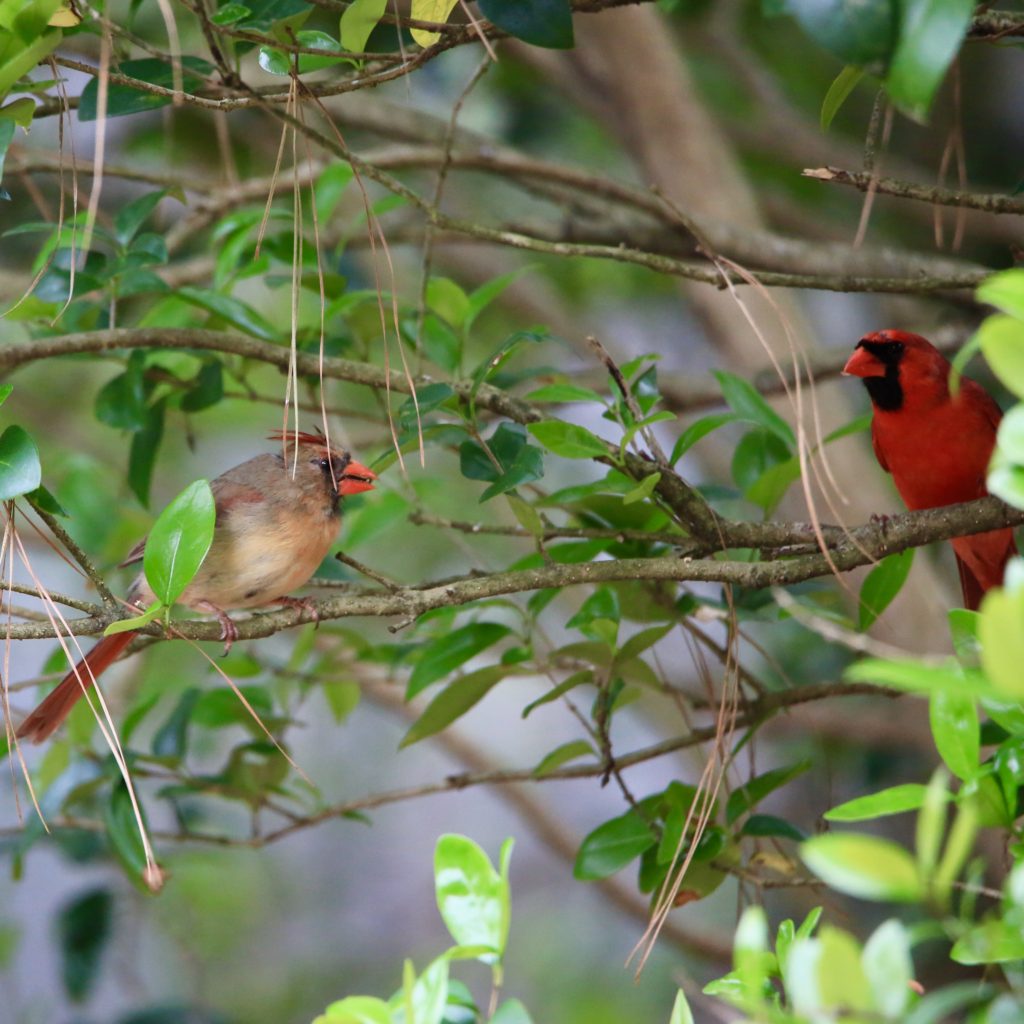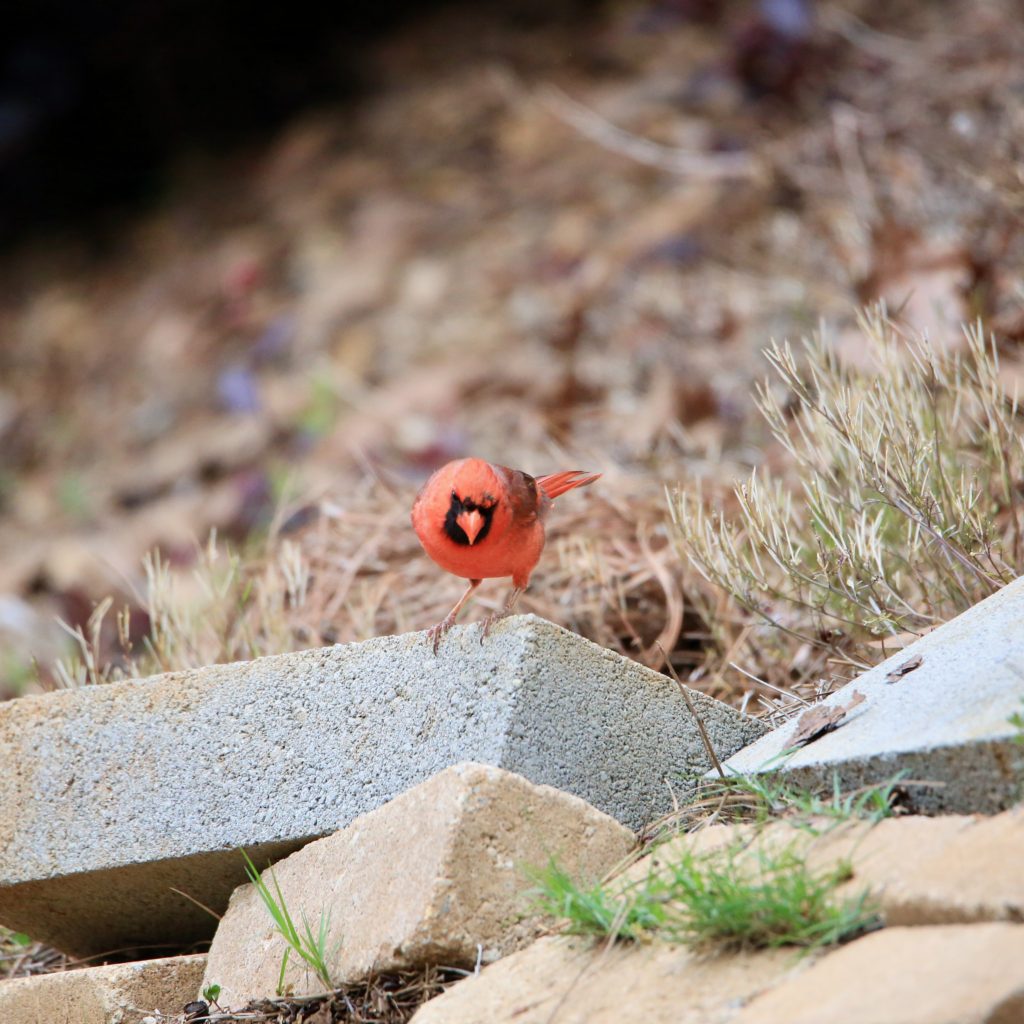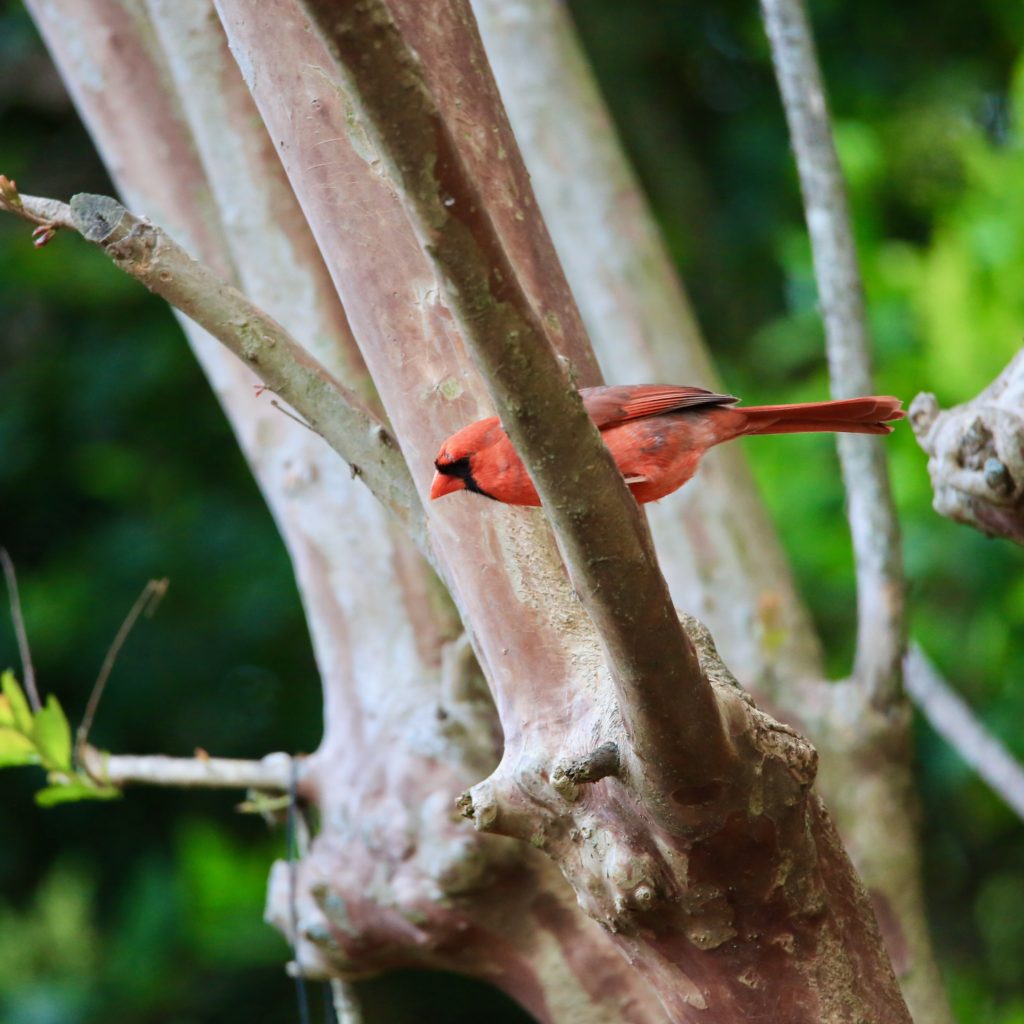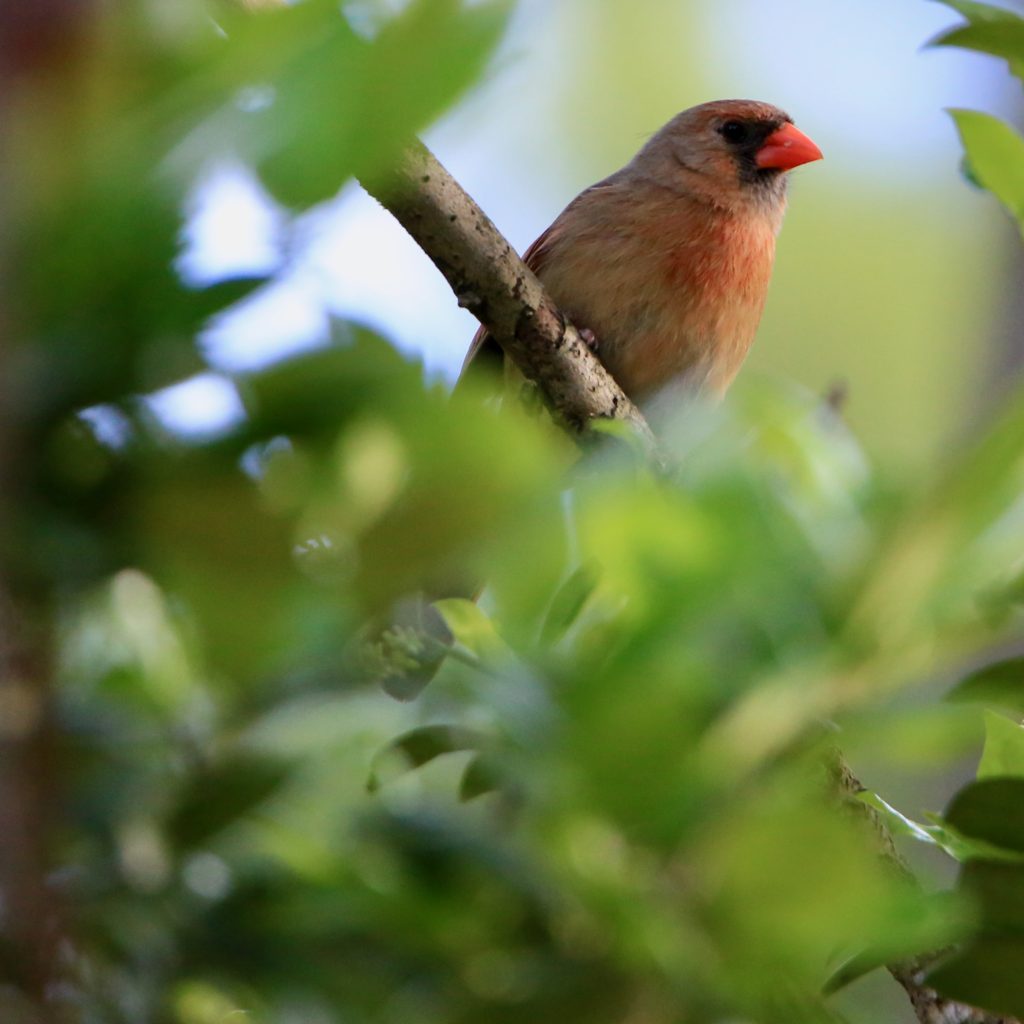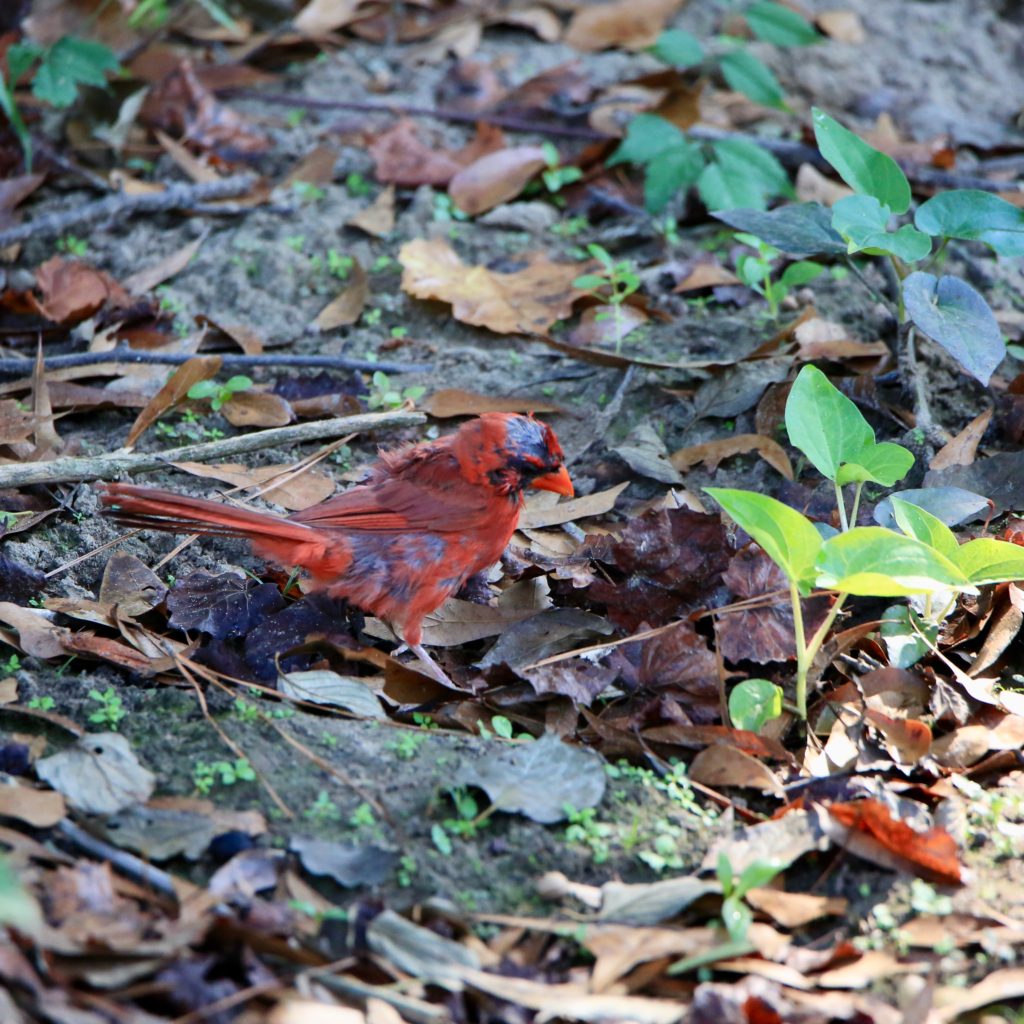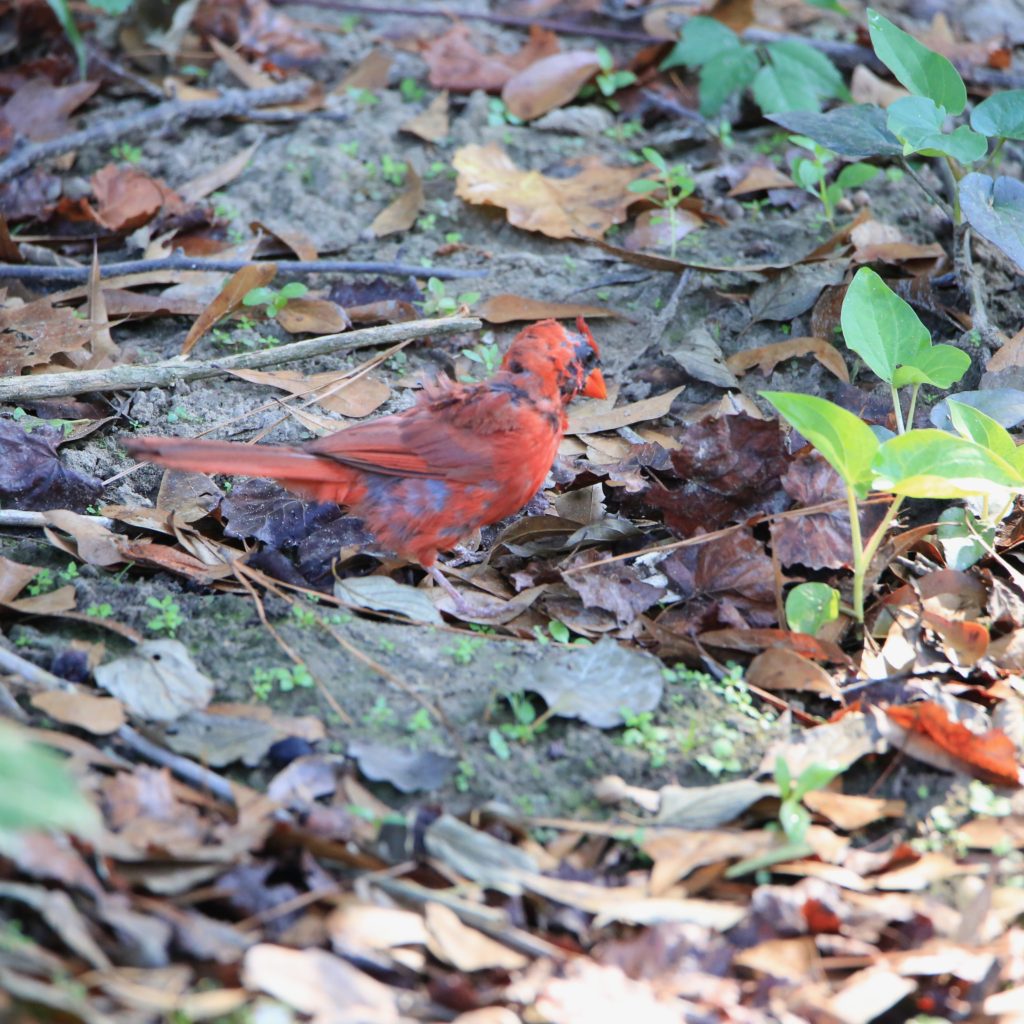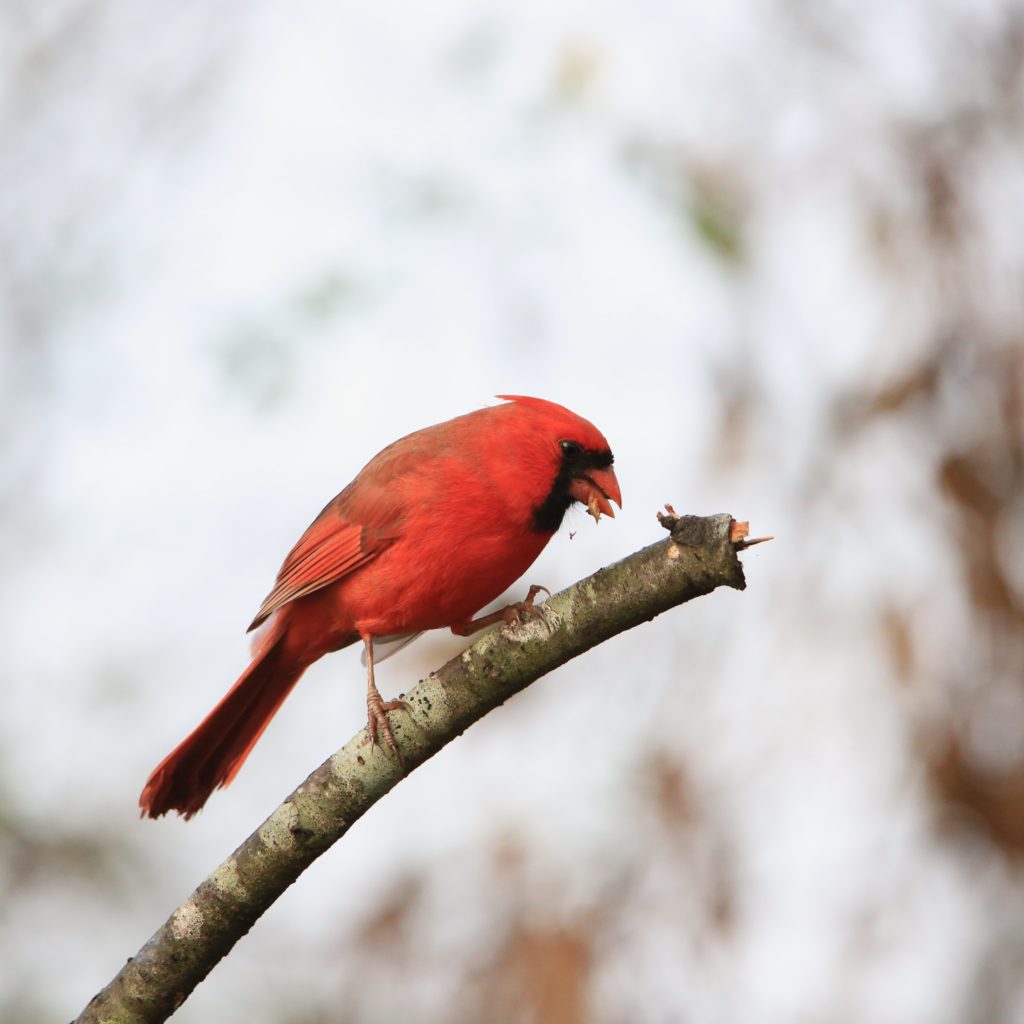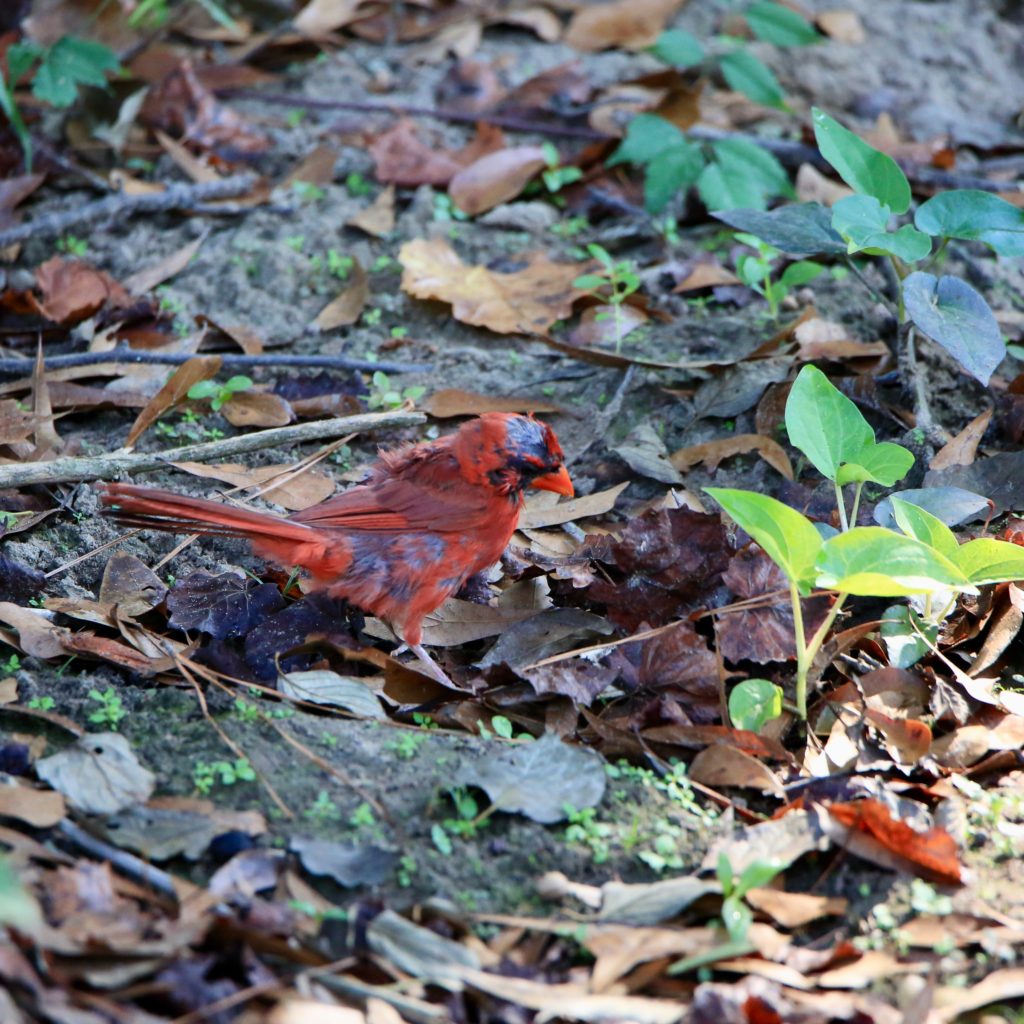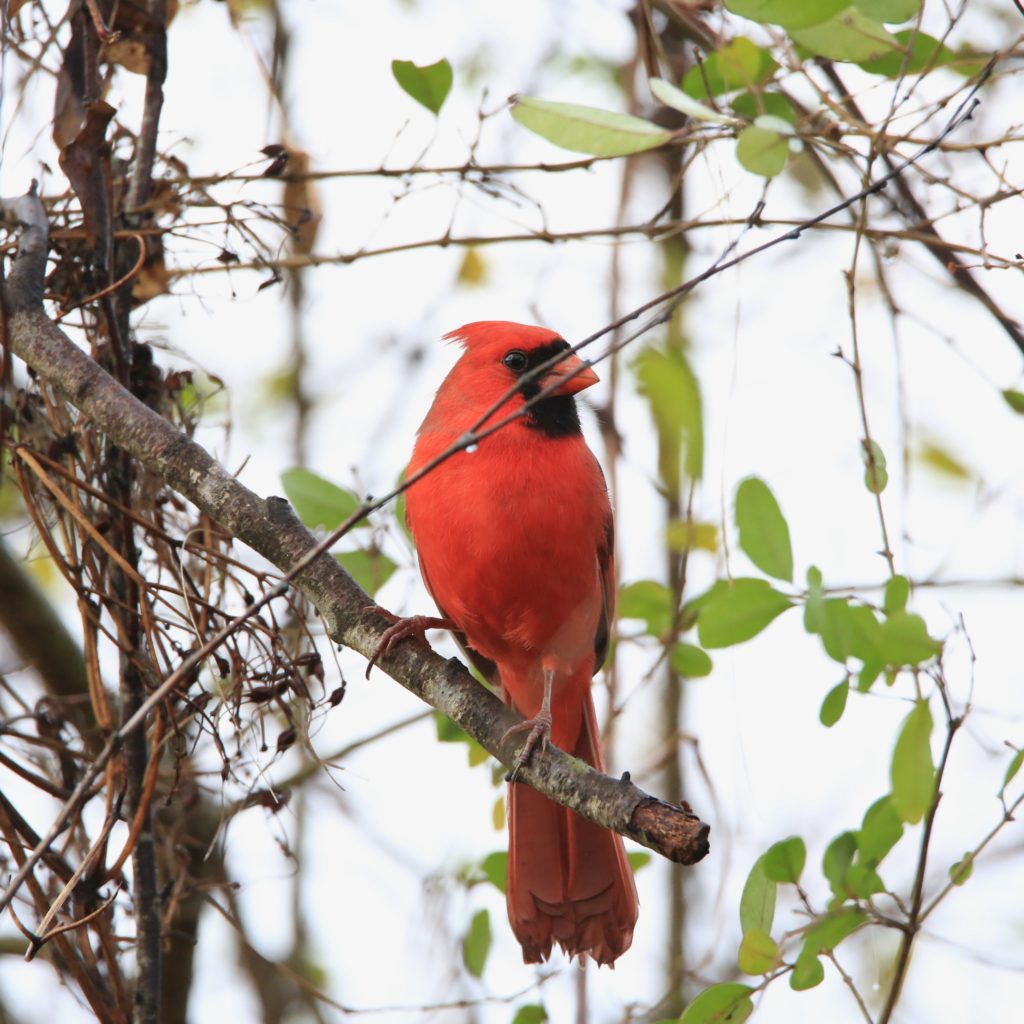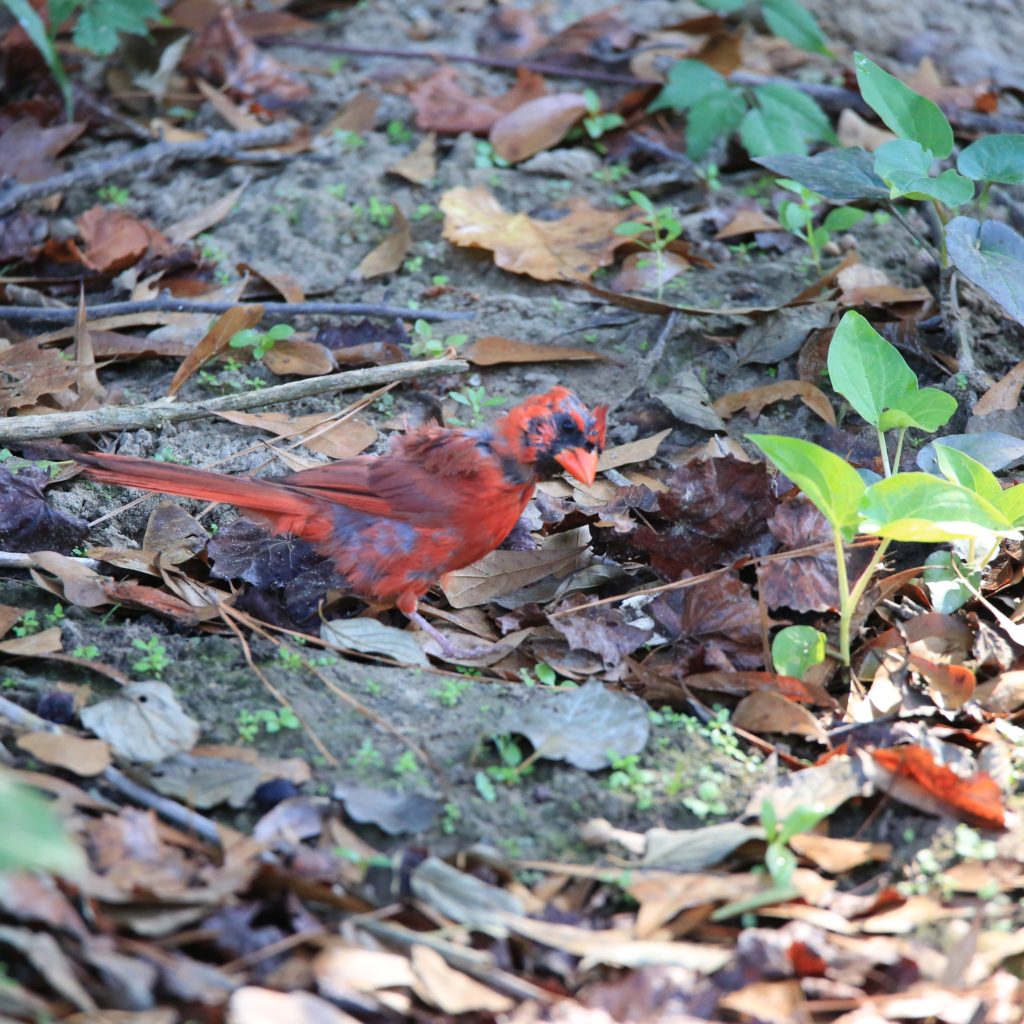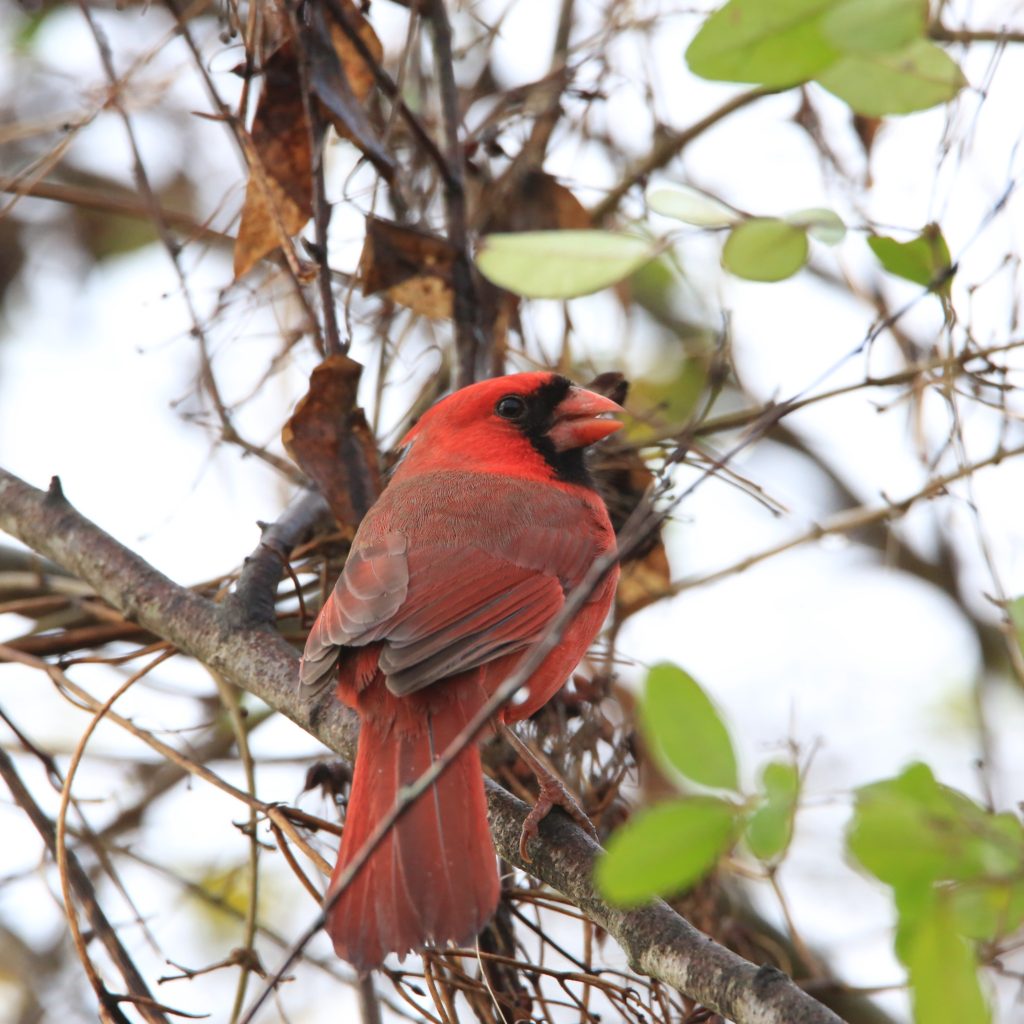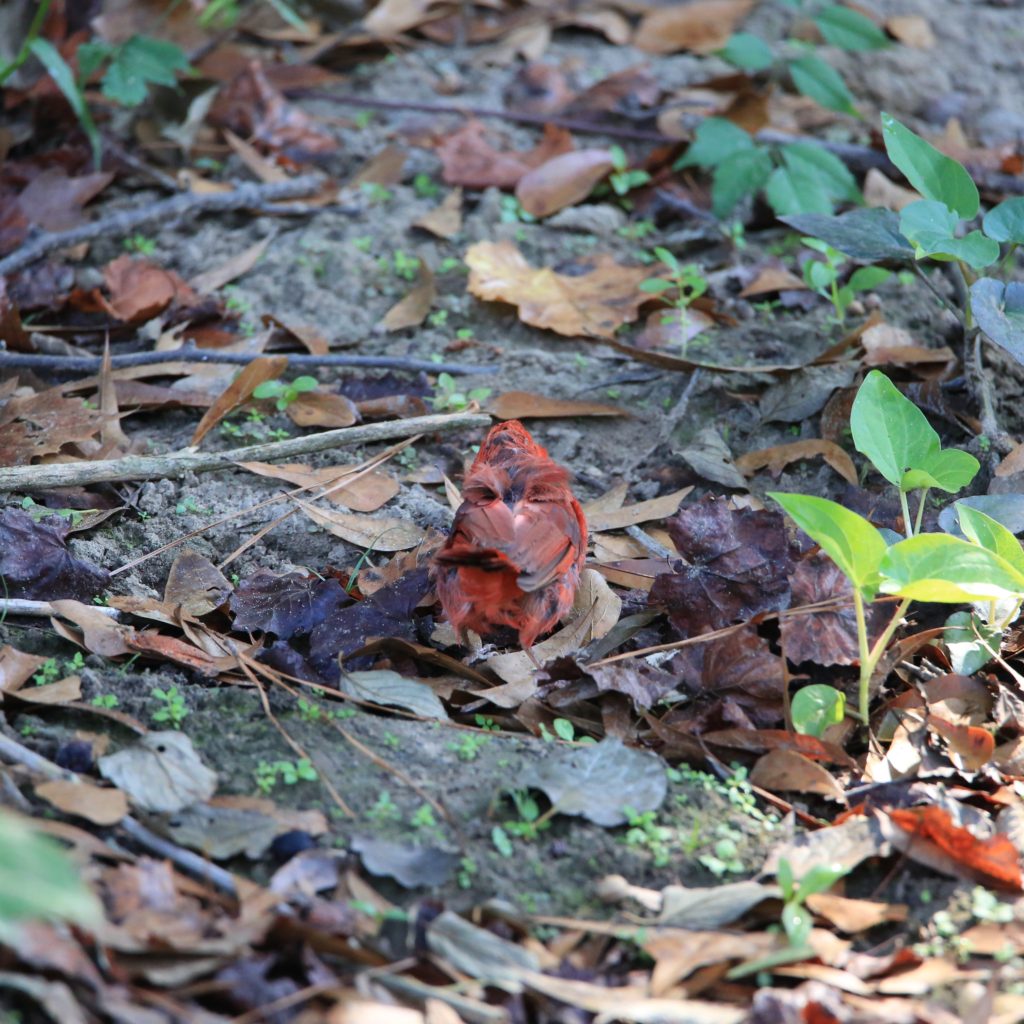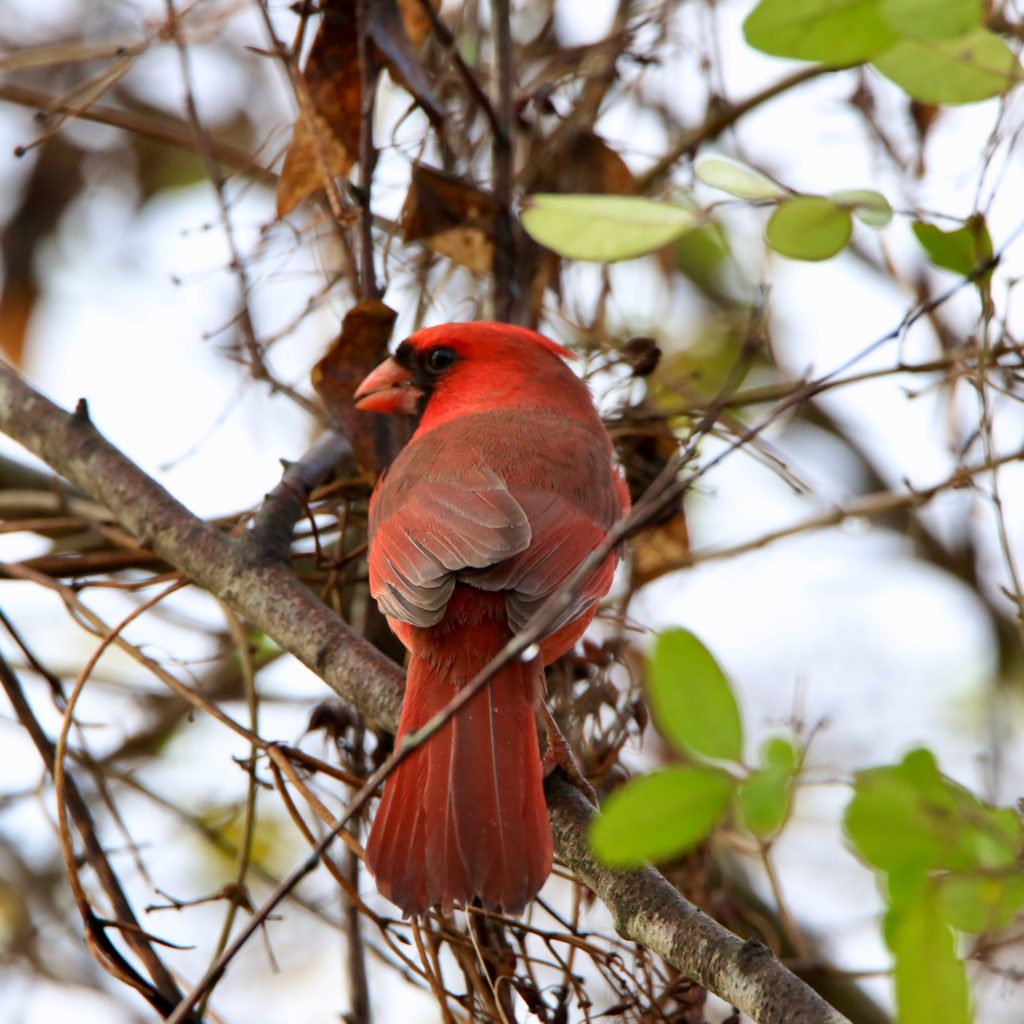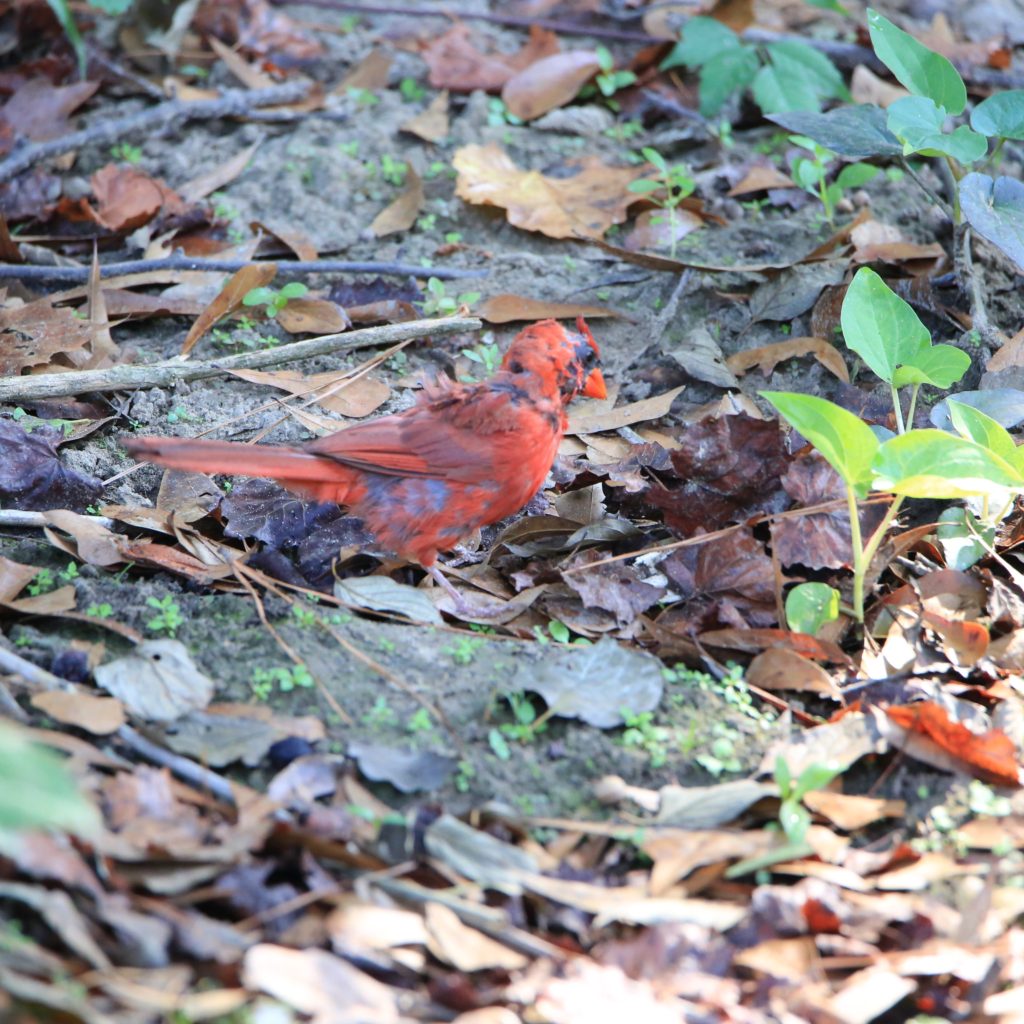
Northern Cardinal
A Northern Cardinal is a fun bird to see while bird watching. Below are some tips to help you identify Northern Cardinals. We have also put together a list of fun Northern Cardinal t-shirts, Northern Cardinal bird patches, bird houses, bird feeders, binoculars, stickers and other fun bird watching items.
About Northern Cardinals
Also known as the “Virginia Nightingale” or “Redbird”, the Northern Cardinal is commonly found throughout eastern and central North America from southern Canada into parts of Mexico and Central America. It is one of the most recognized birds in North America due to its unique characteristics.
Northern Cardinal Color Pattern
Male Cardinals are known for their bright red plumage while the female cardinal has either olive of dull brown feathers with hints of red on her tail and wings.
Description and Identification
Males and females have very identifiable bills that are short, thick, and orange. Males are a bright scarlet color, and around their eyes and bills is a black mask. Females feature crests and light brown plumage, and they have reddish bits on their tails, crest, and wings. You can identify juveniles as they look like females, but their bills are gray or black. Northern cardinals stay put all year, so you can see them even in the dead of winter. You’ll spot them quickly because they don’t molt, and their plumage is bright throughout the year. Listen for their whistles, especially early in the morning.
Northern Cardinal Size
This fairly large bird has a long tail, prominent crest and a very short and thick bill.
The relative size for both sexes is:
- Length: 8.3-9.1 in (21-23 cm)
- Weight: 1.5-1.7 oz (42-48 g)
- Wingspan: 9.8-12.2 in (25-31 cm)
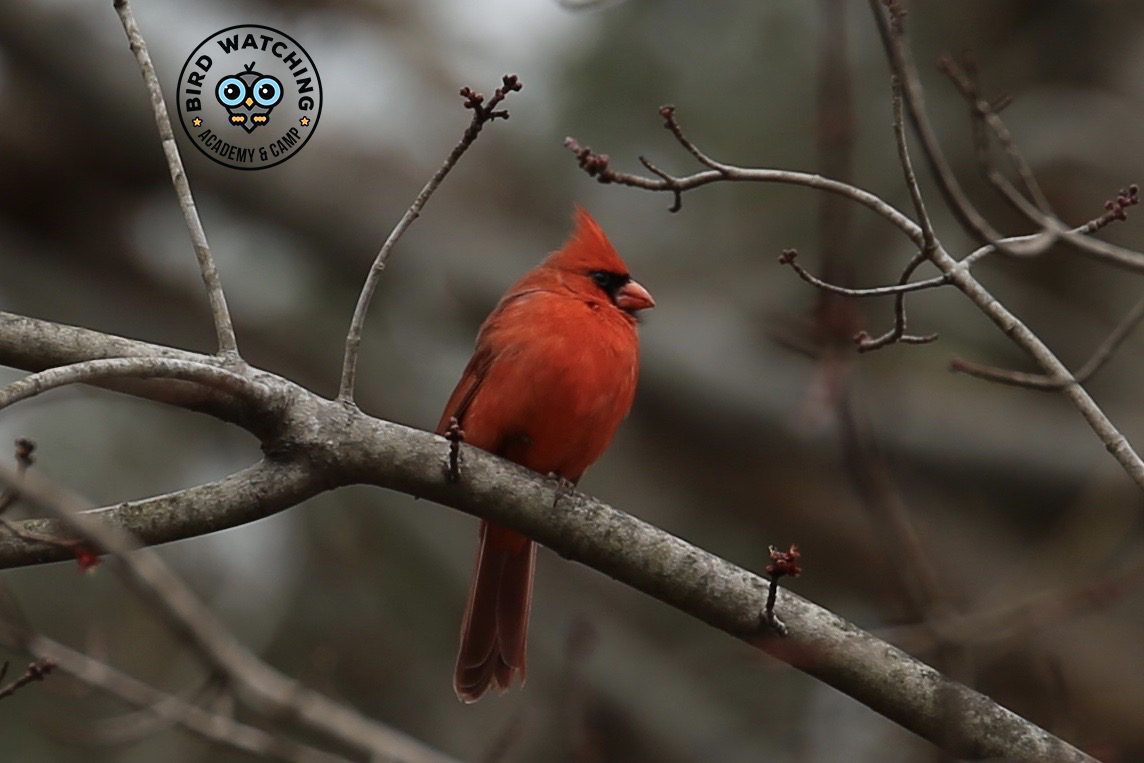
Northern Cardinal Behavior
Cardinals are non-migratory birds. Most of them live within a mile of where they were born. The Cardinals are also commonly known for being song-birds. The male uses this to call and attract a mate while the female will often sing from their nest to call out to her mate. The cardinal pairs also have song phrases that they share with their mate.
What Northern Cardinal Eat
Cardinals’ bills are made for cracking and opening seeds, but they have a wider diet than just seeds. They also eat fruit and insects. They feed their nestlings insects most of the time. They eat a wide variety of fruits and seeds, such as corn, tulip-tree, sumac, blackberry, hackberry, mulberry, sedges, grasses, buckwheat, wild grape, and dogwood. They love black oil sunflower seeds, if you’re thinking of putting out a bird feeder in your yard for them. As for insects, they ingest moths, butterflies, spiders, centipedes, flies, cicadas, leafhoppers, katydids, crickets, and beetles. Cardinals have a nutrient-rich diet that varies according to their particular habitat throughout the year.
They eat seeds, grains, fruits, and insects. This is why they are commonly found at bird feeders. Common foods include grape, sunflower seeds, buckwheat, centipedes, spiders, and sumac.
Where Northern Cardinals Live and their Habitat
Cardinals will happily populate your yard if you set out a bird feeder. Hint: they love sunflower seeds. Undergrowth around the edges of your property is where you’ll likely find them. They enjoy open woodlands and make nests in shrubs. If you don’t see one in your backyard, you can still find them, but you have to look harder. They enjoy in thick undergrowth. You’ll hear their sharp chip notes when you’re looking for them. Investigate forest edges, mesquite, ornamental landscapes, hedgerows, marshy thickets, overgrown fields, and re-growing forests. They like to perch up high when they sing, and they nest in thick foliage. They’ve expanded northward as towns and suburbs in eastern North America have grown.
Northern Cardinals are mostly found in dense shrubby areas such as overgrown fields, backyards, forest edges and marshy thickets. They tend to lay their nests in forks of small branches in 1-5 feet high shrubs in dense foliage.
Range and Migration

Northern cardinals boast an extensive range. They live throughout parts of the Great Plains, large parts of Mexico, parts of southern Arizona and New Mexico, and eastward through much of the eastern half of the U.S. Their range crosses a bit into Canada but stops short of much of Maine. They don’t migrate, so you can see them throughout the year in many parts of the U.S., Mexico, and a small portion of Canada. While most cardinals live in the eastern parts of Mexico all the way down to the Yucatan Peninsula, you can also find them in the northwestern part of the country, Baja California, and a thin stretch of western Mexico.
Northern Cardinal Lifecycle
The Cardinals mate in March then again later on between May and July. The female lays four eggs which take about 12 days to hatch. After 11 days the young Cardinal can leave the nest then can fly 20 days later. On average, the Cardinal lives for 3 years in the wild although several have been known to have life spans of 13 to 15 years.
Nesting
The male and female cardinal go nest site hunting together just before the female begins the arduous process of constructing a nest. They call to each other and carry material for the nest in their bills when they check out sites. The female puts the nest in forks of small branches in saplings, vine tangle, and shrubs one to 15 feet off the ground. You can find nests in all sorts of trees and shrubs. Males haul nest material to the building site, and females builds a four-layer nest that takes about three to nine days to put together. She will lay about 2-5 eggs, and the eggs will incubate between 11 and 13 days.
Ornithology
Anatomy of a Northern Cardinal
Anatomy is the study of animals or other organisms and their parts. Bird Anatomy is the study of bird and their parts. Birds have beaks, wings, talons, feathers, and other parts that are important to learn about. Learning about bird anatomy will also help kids learn how to identify birds. We focus on the exterior, external, or outside anatomy of birds to help kids learn how to identify them.
Some other types of bird anatomy are the skeletal system, muscular system, circulatory system, respiratory systems, and digestive systems. Birds also have reproductive systems, nervous systems and immune systems. Birds are amazing creatures.
FREE PRINTABLE BIRD ANATOMY INFOGRAPHIC
Here is a fun printable design to help kids learns about BIRDS.
CLICK HERE TO DOWNLOAD AND PRINT THIS FILE Bird Anatomy Northern Cardinal
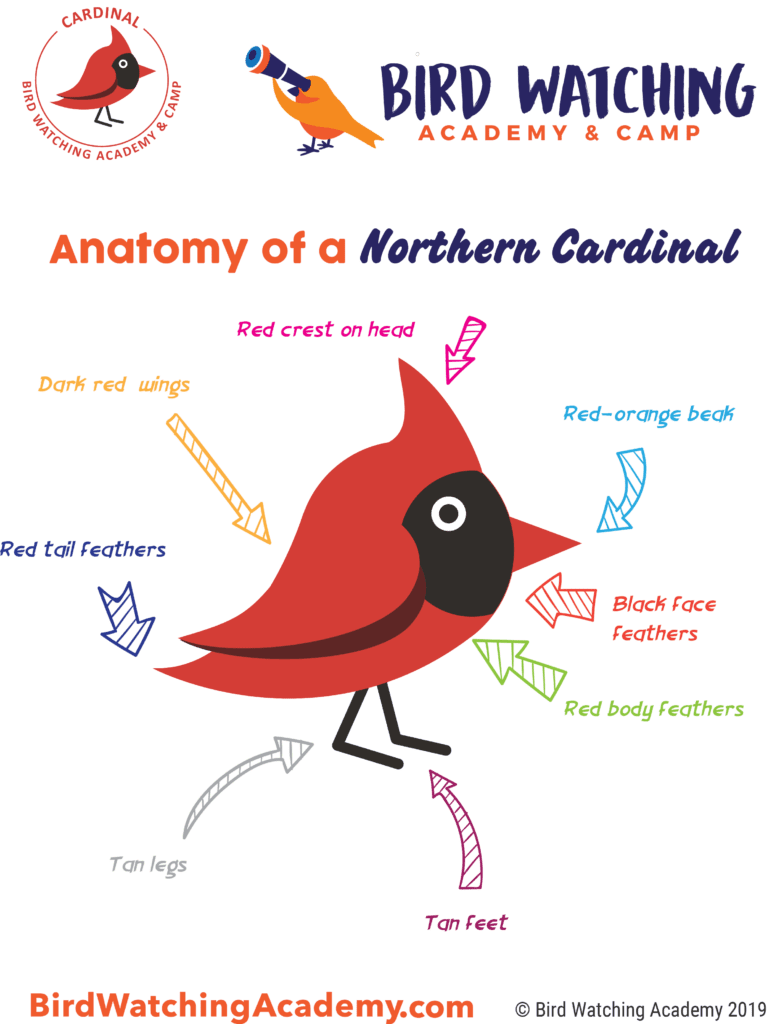
Below is a blank copy to test your kids on the bird anatomy of a BIRD
CLICK HERE TO DOWNLOAD AND PRINT THIS BLANK TEST FILE Bird Anatomy Northern Cardinal Test
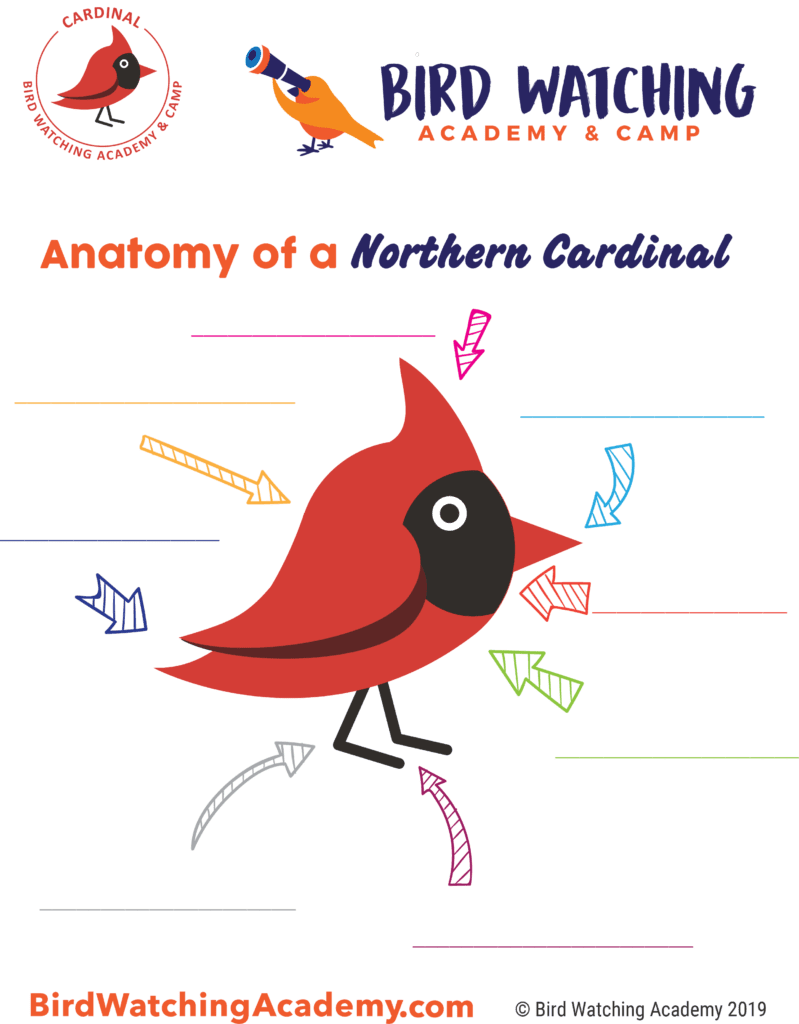
Bird Watching Academy & Camp Subscription Boxes
At Bird Watching Academy & Camp we help kids, youth, and adults get excited and involved in bird watching. We have several monthly subscription boxes that you can subscribe to. Our monthly subscription boxes help kids, youth, and adults learn about birds, bird watching, and bird conservation.
Bird Watching Binoculars for Identifying Northern Cardinals
The most common types of bird watching binoculars for viewing Northern Cardinals are 8×21 binoculars and 10×42 binoculars. Bird Watching Academy & Camp sells really nice 8×21 binoculars and 10×42 binoculars. You can view and purchase them here.
Northern Cardinal 3D Paper Craft Model
This Northern Cardinal 3D papercraft model is a great way to learn about birds and have fun doing it. This model is like a puzzle where you have to connect the pieces together. It is designed for adults or skilled crafty teens. The difficulty level is medium to hard but is fun.
- Northern Cardinal 3D Paper Craft ModelProduct on sale$4.99
Northern Cardinal T-shirts
If you love the Northern Cardinal you should purchase a Bird Watching Academy & Camp T-shirt. To help support bird conservation we donate 10 percent to bird conservation activities.
Northern Cardinal Iron On Patches
Kids, Youth, and Adults love to collect our Bird Watching Academy & Camp iron on patches. Our bird watching patches help you keep track of the birds you have seen an identified. You can also display the patches on our Bird Watching Academy & Camp banners.
The Northern Cardinal is a great iron on patch to start your collection with. The patches are durable and can be sewn on or ironed on to just about anything.
Northern Cardinal Stickers
Stickers are a great way for you to display your love for bird watching and the Northern Cardinal. We sell a monthly subscription sticker pack. The sticker packs have 12 bird stickers. These sticker packs will help your kids learn new birds every month.
Northern Cardinal Activities for Kids
We thought a fun perler bead pattern would be fun for kids. Please download and print with 100% scale to fit perfectly with perler bead patterns.
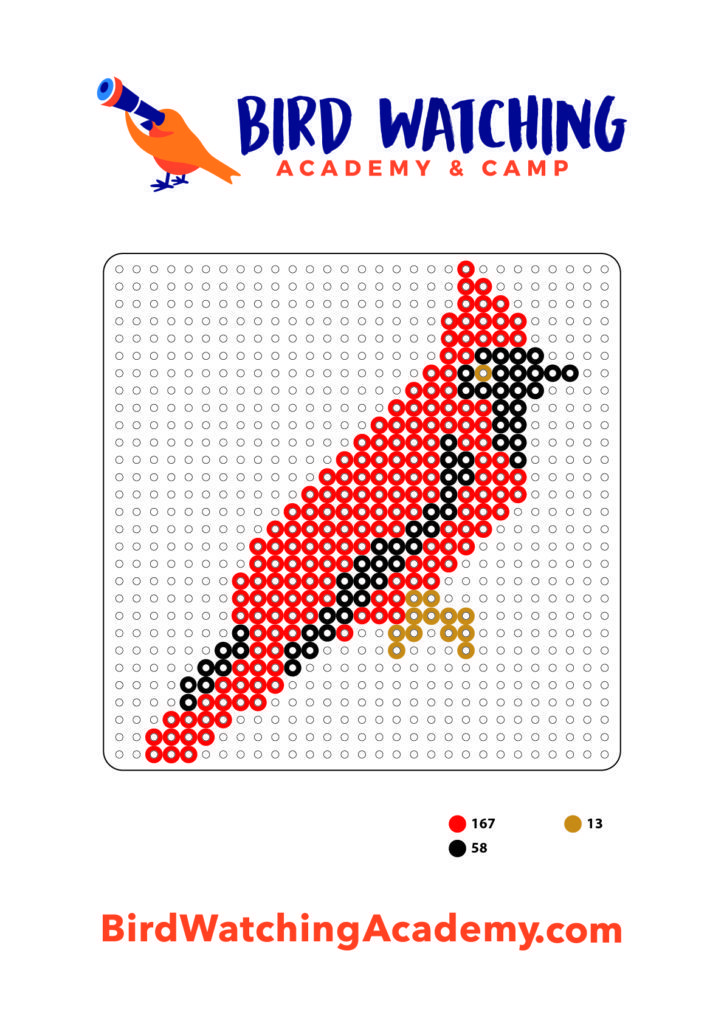
Bird Feeders For Northern Cardinal
There are many types of bird feeders. Here are our favorite bird feeders for your backyard. We use all of these bird feeders currently. Kids will have a great time watching birds eat at these bird feeders. Using this collection of bird feeders will provide a wide variety and many types of birds.
Best Bird Houses for Northern Cardinal
There are many types of bird houses. Building a bird house is always fun but can be frustrating. These 4 bird houses have become our favorites. Getting a bird house for kids to watch birds grow is always fun. We spent a little extra money on these bird houses but they have been worth the higher price and look great.


